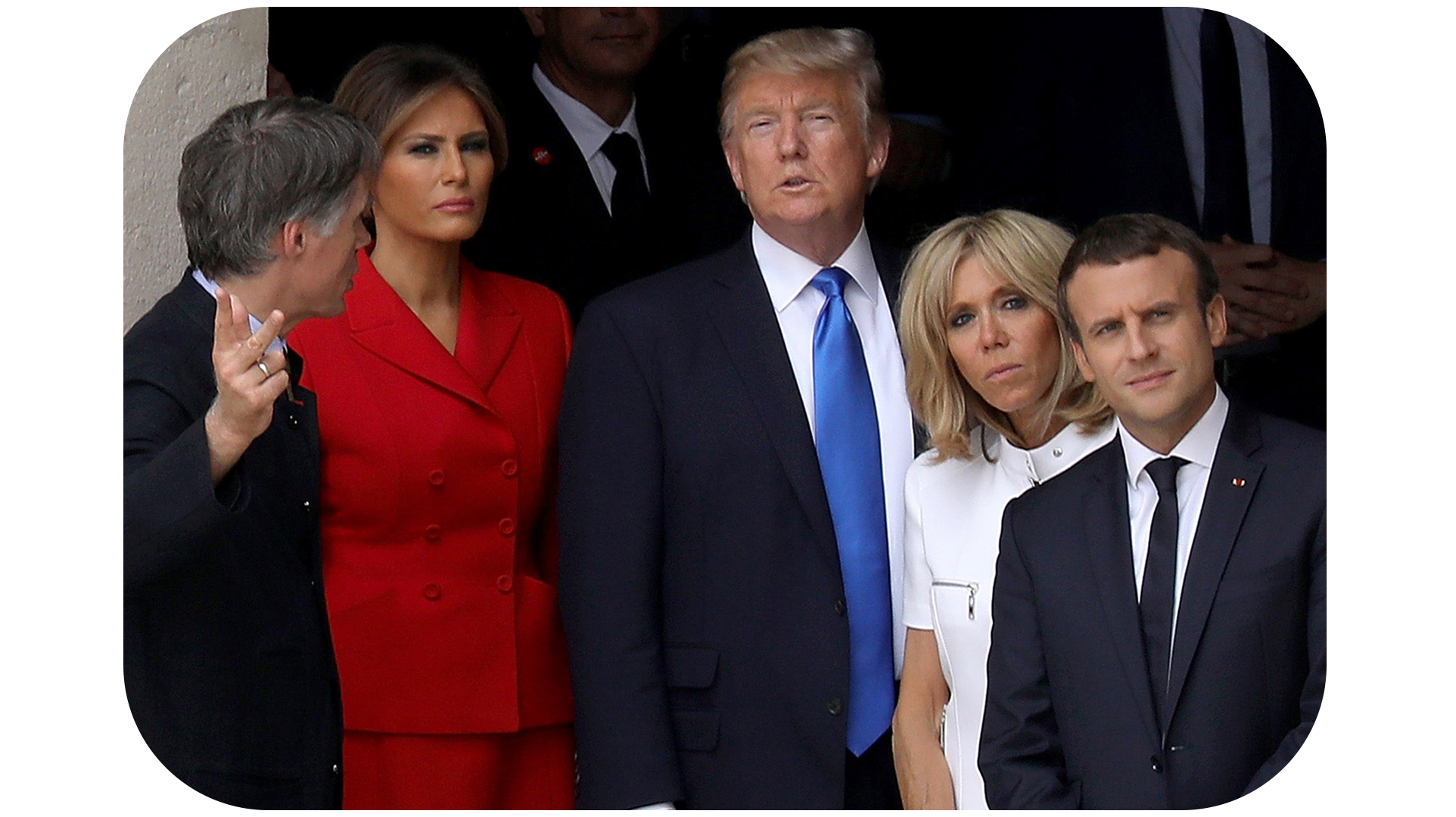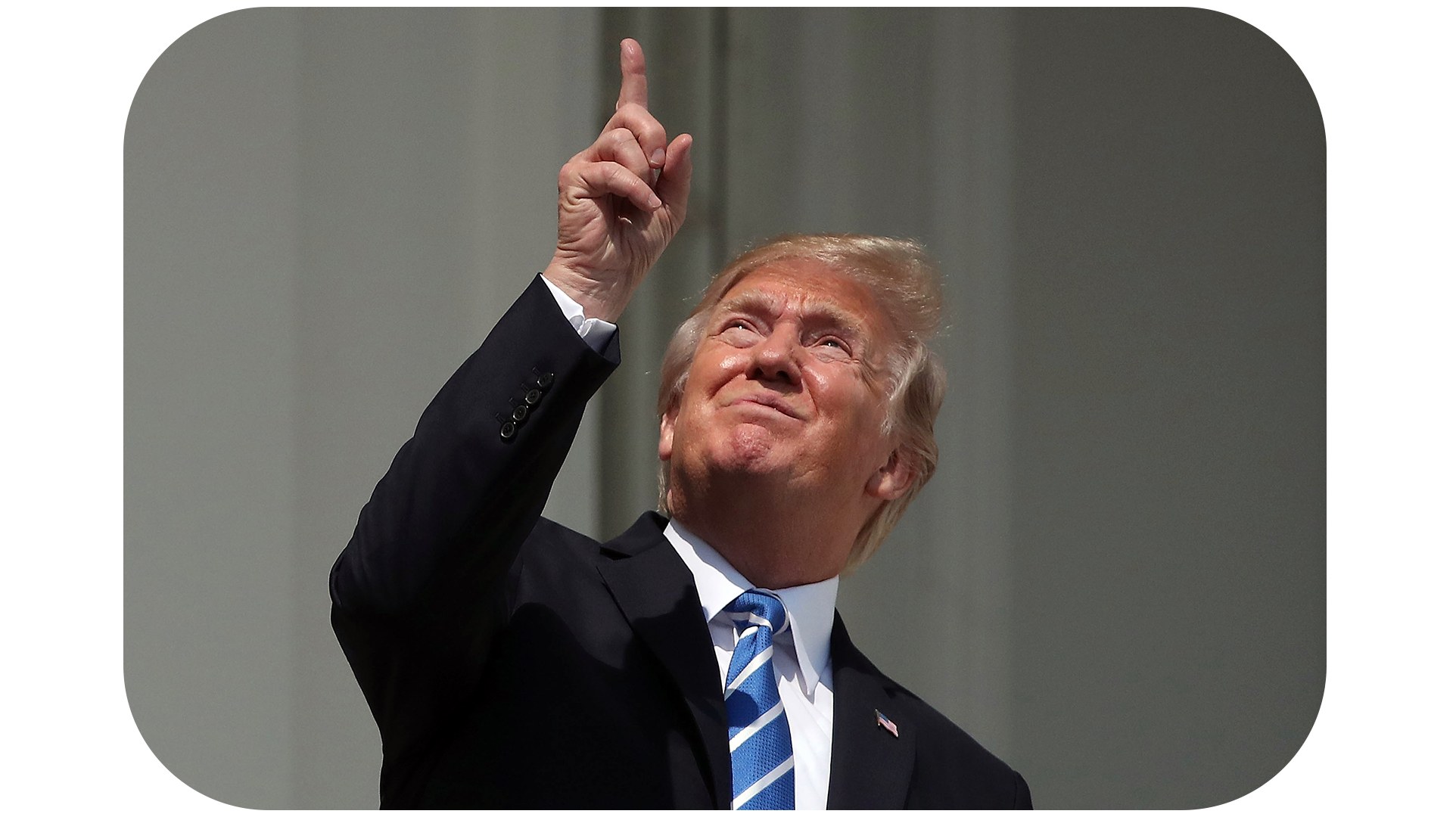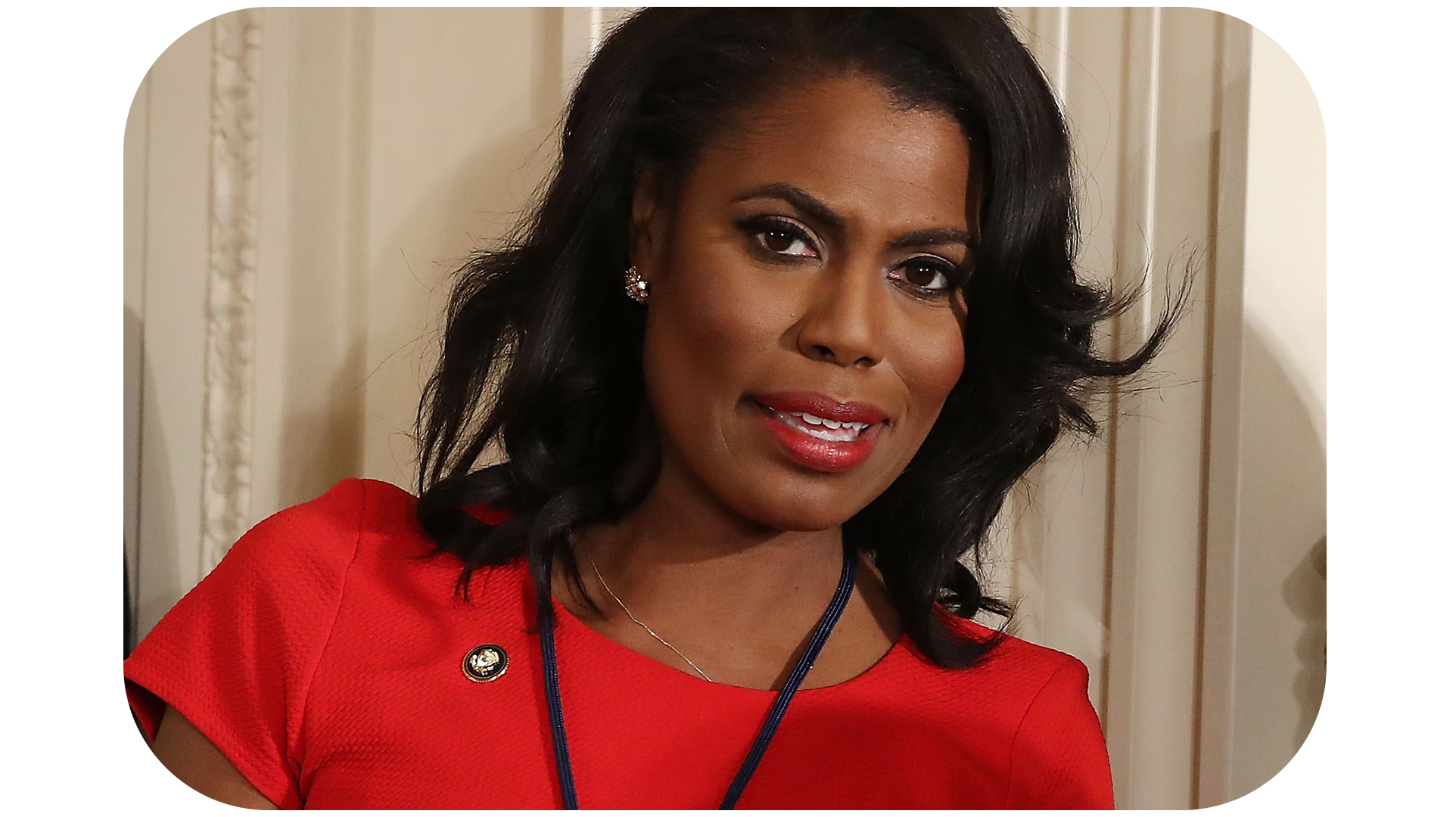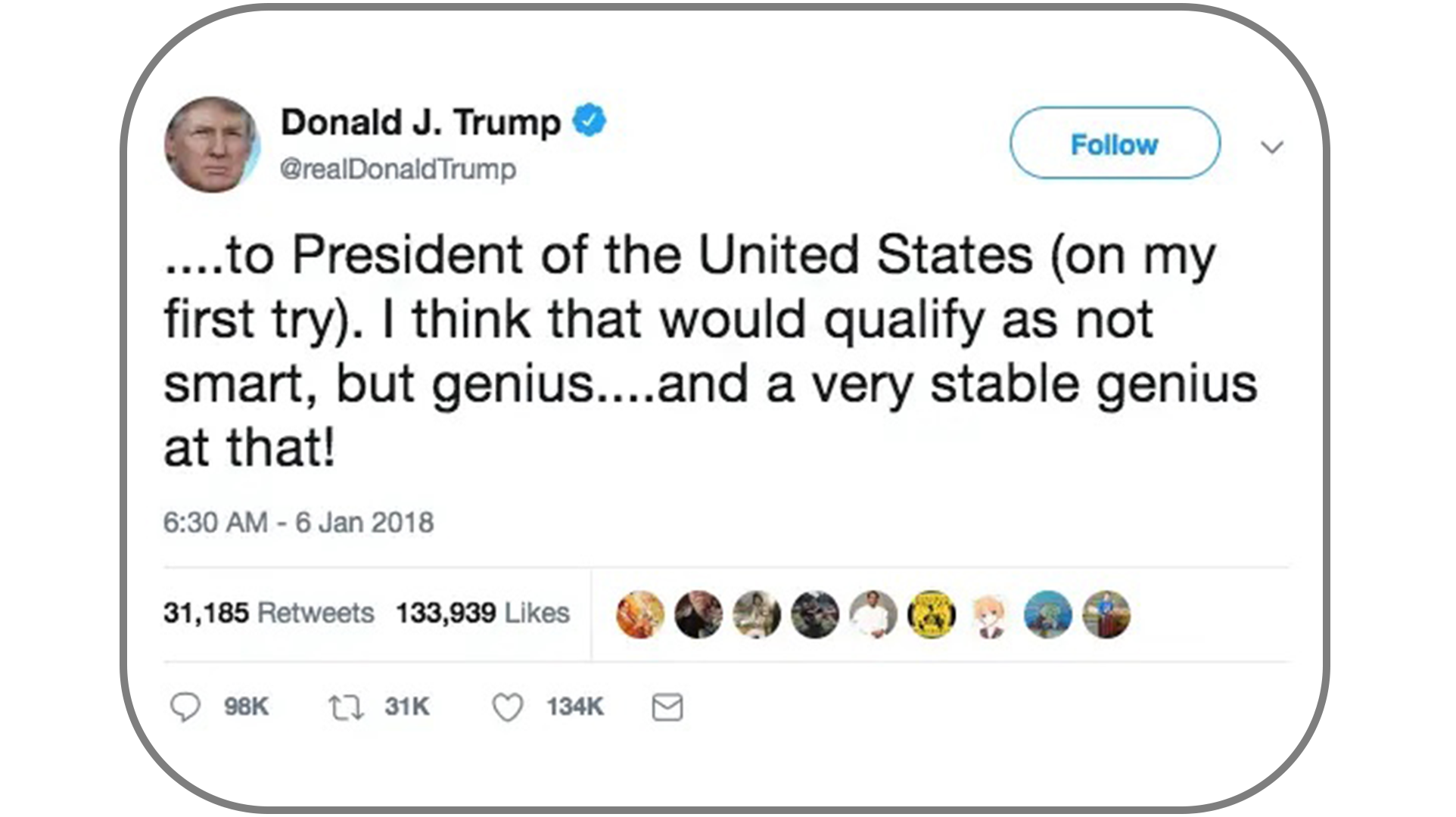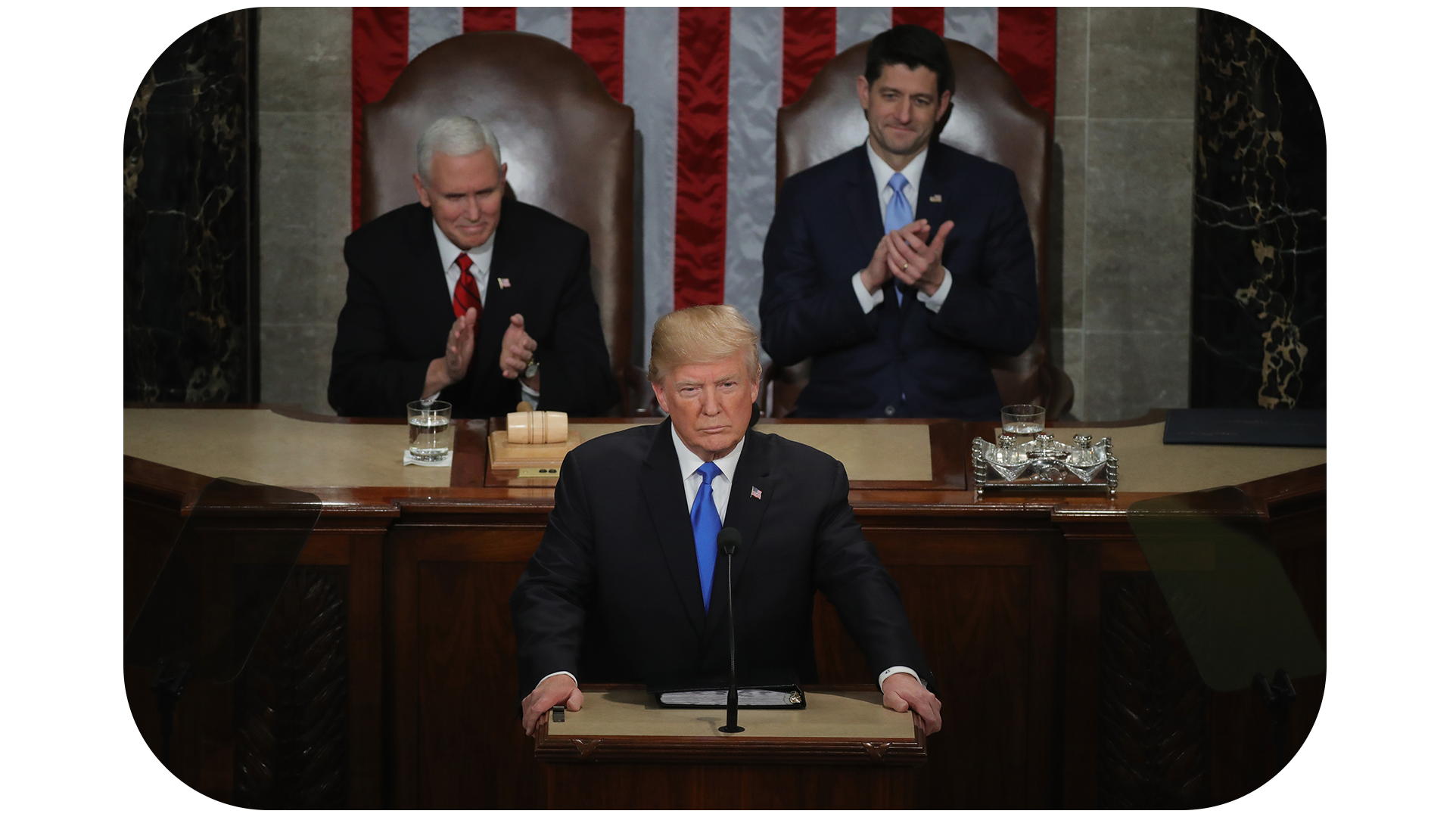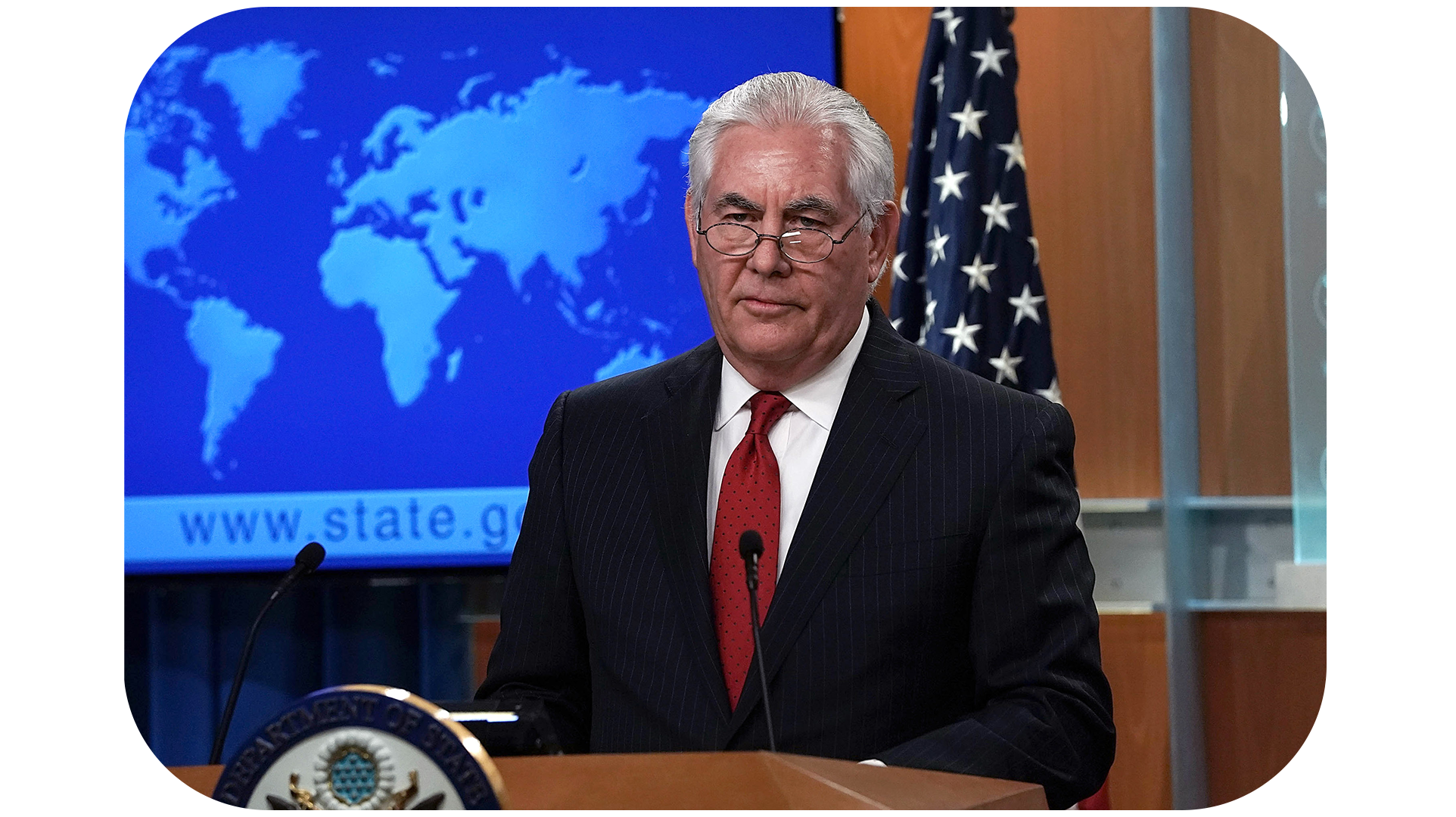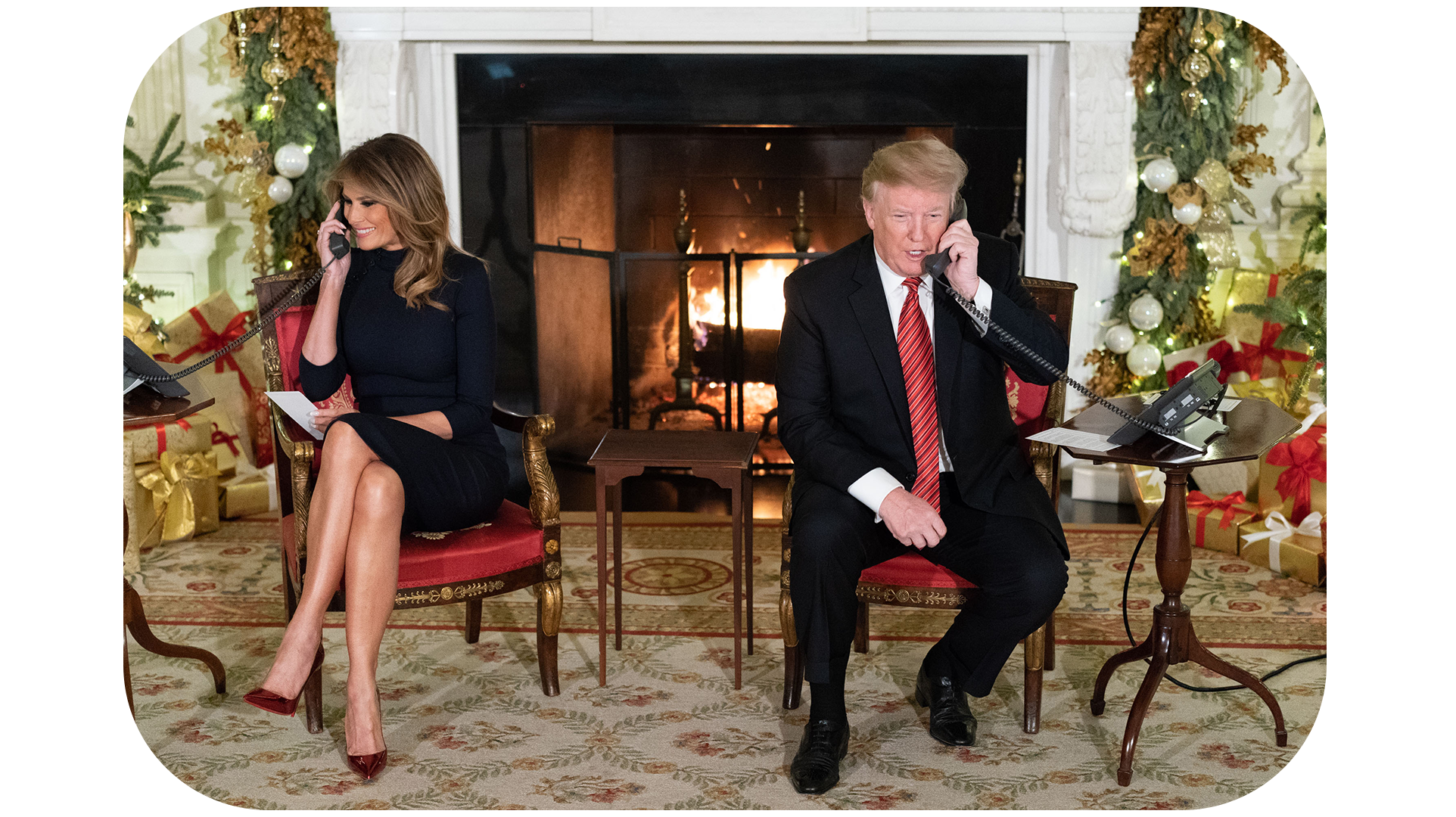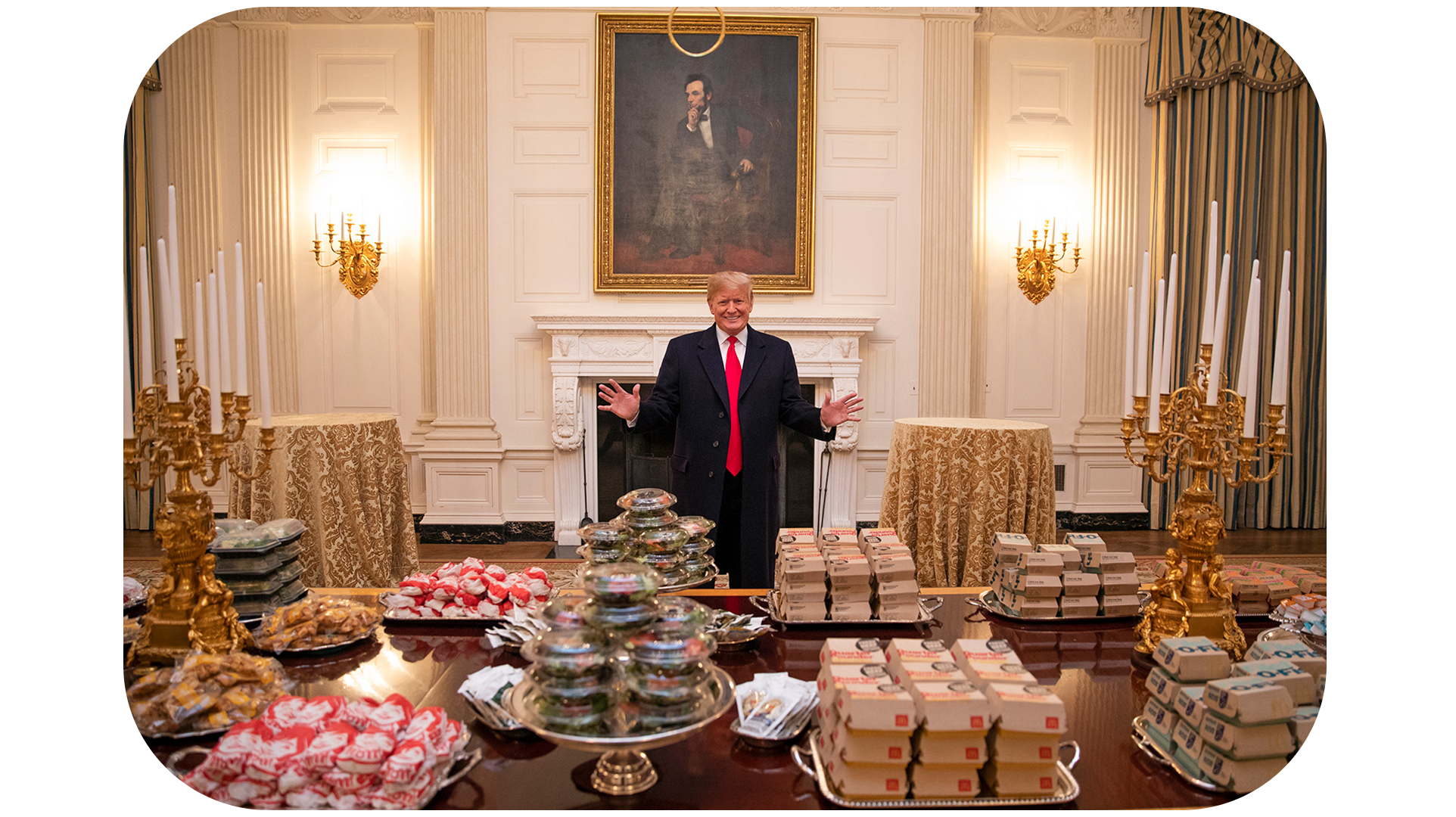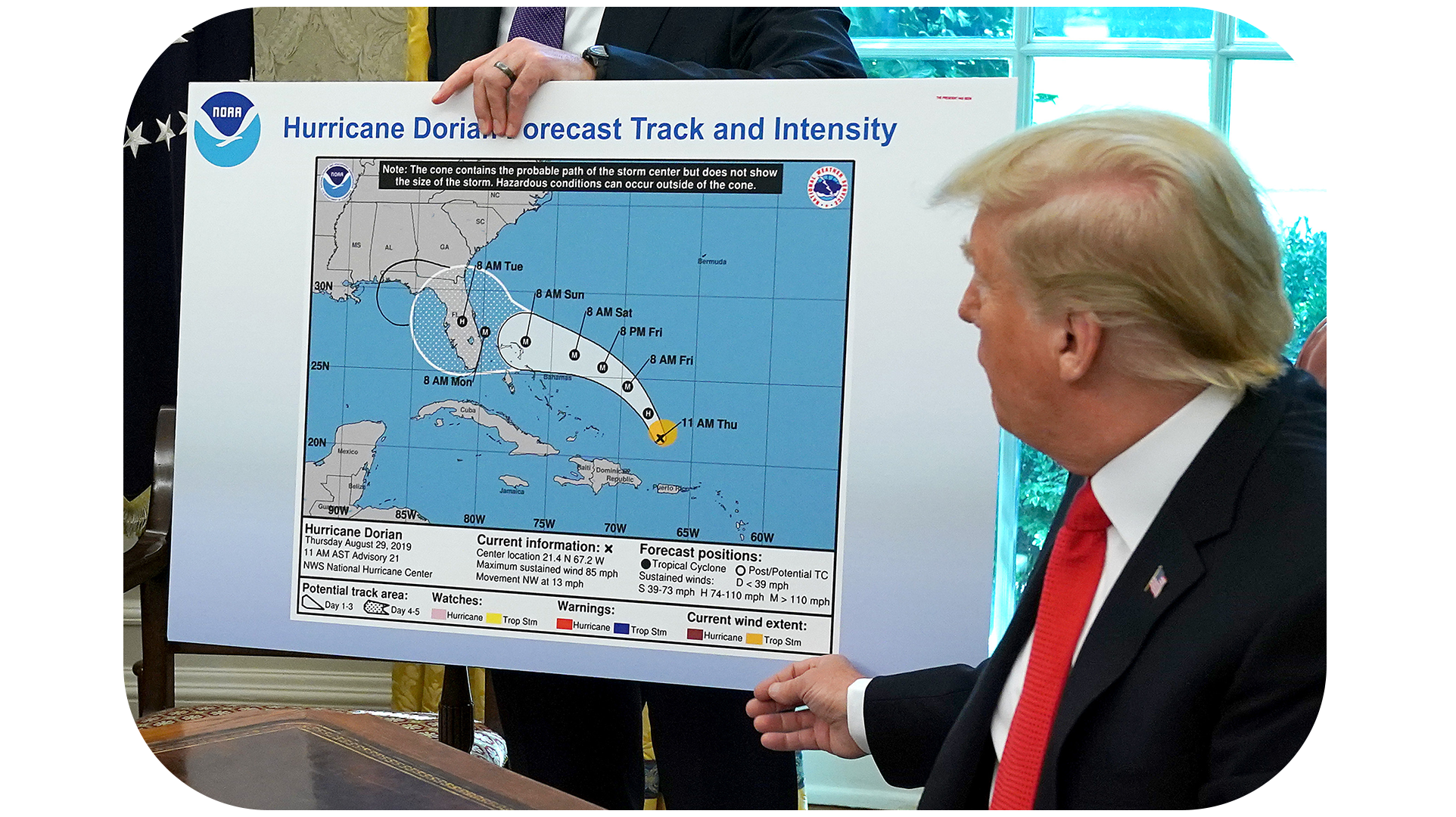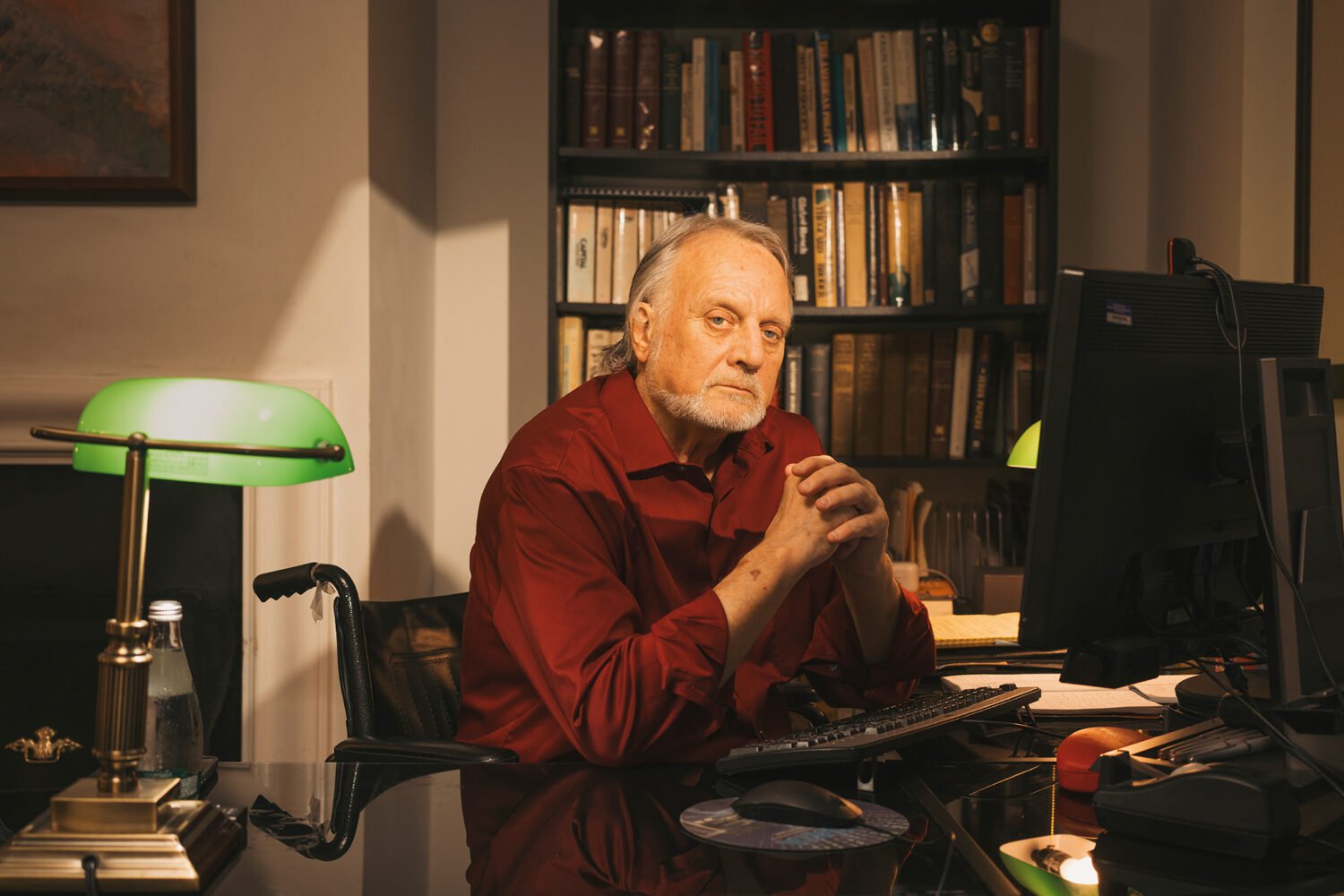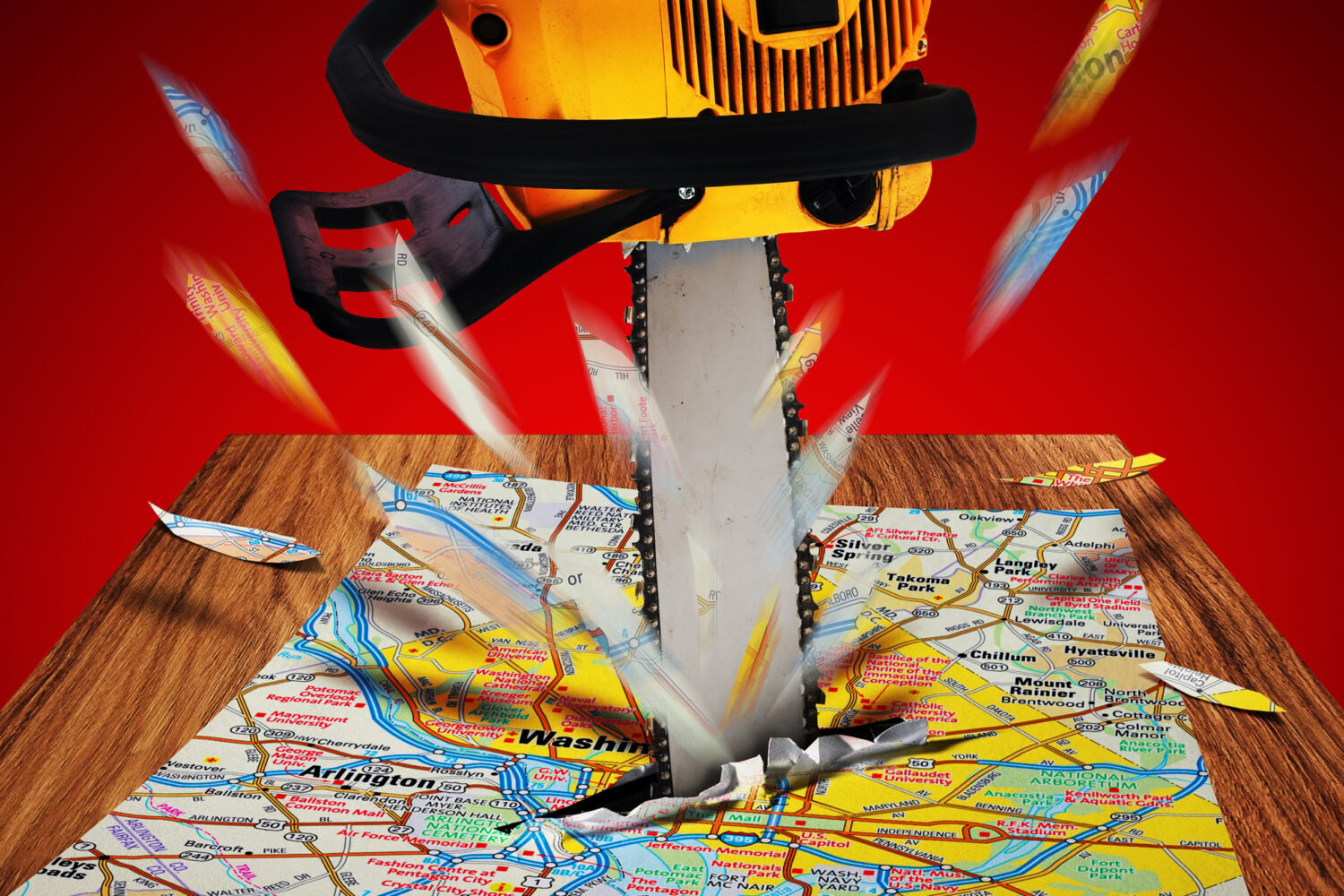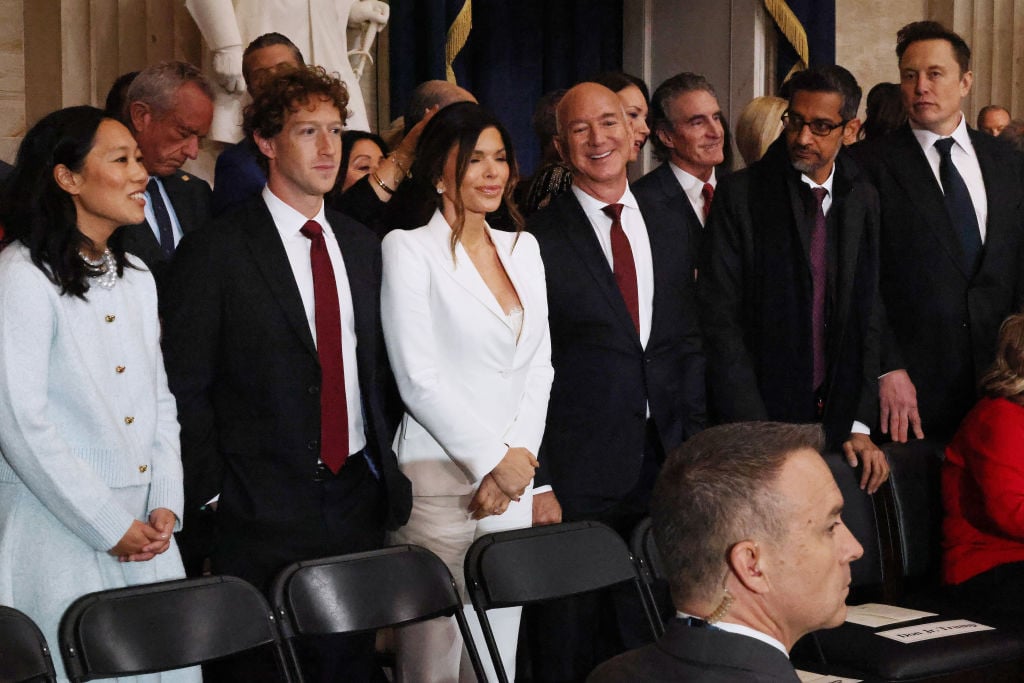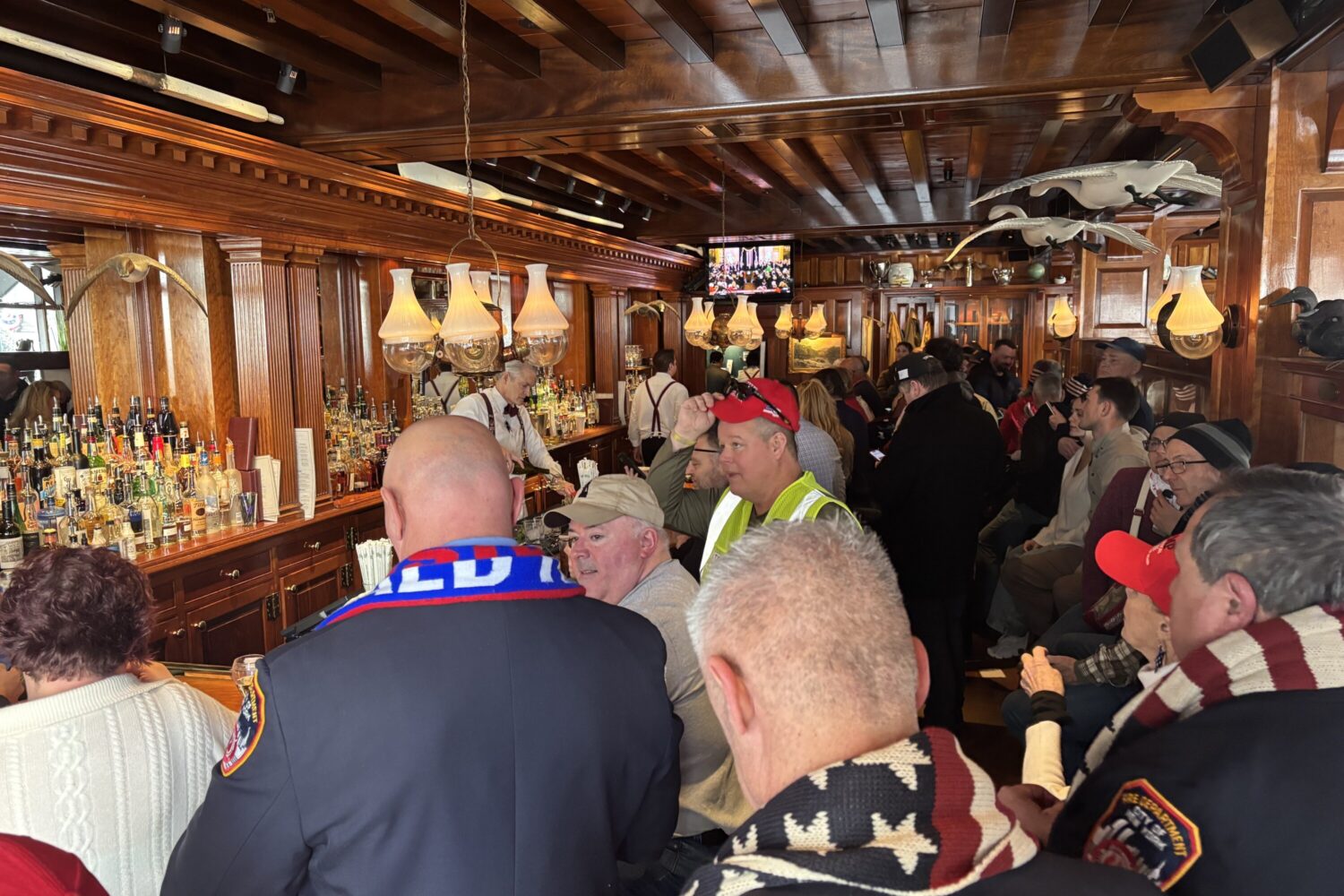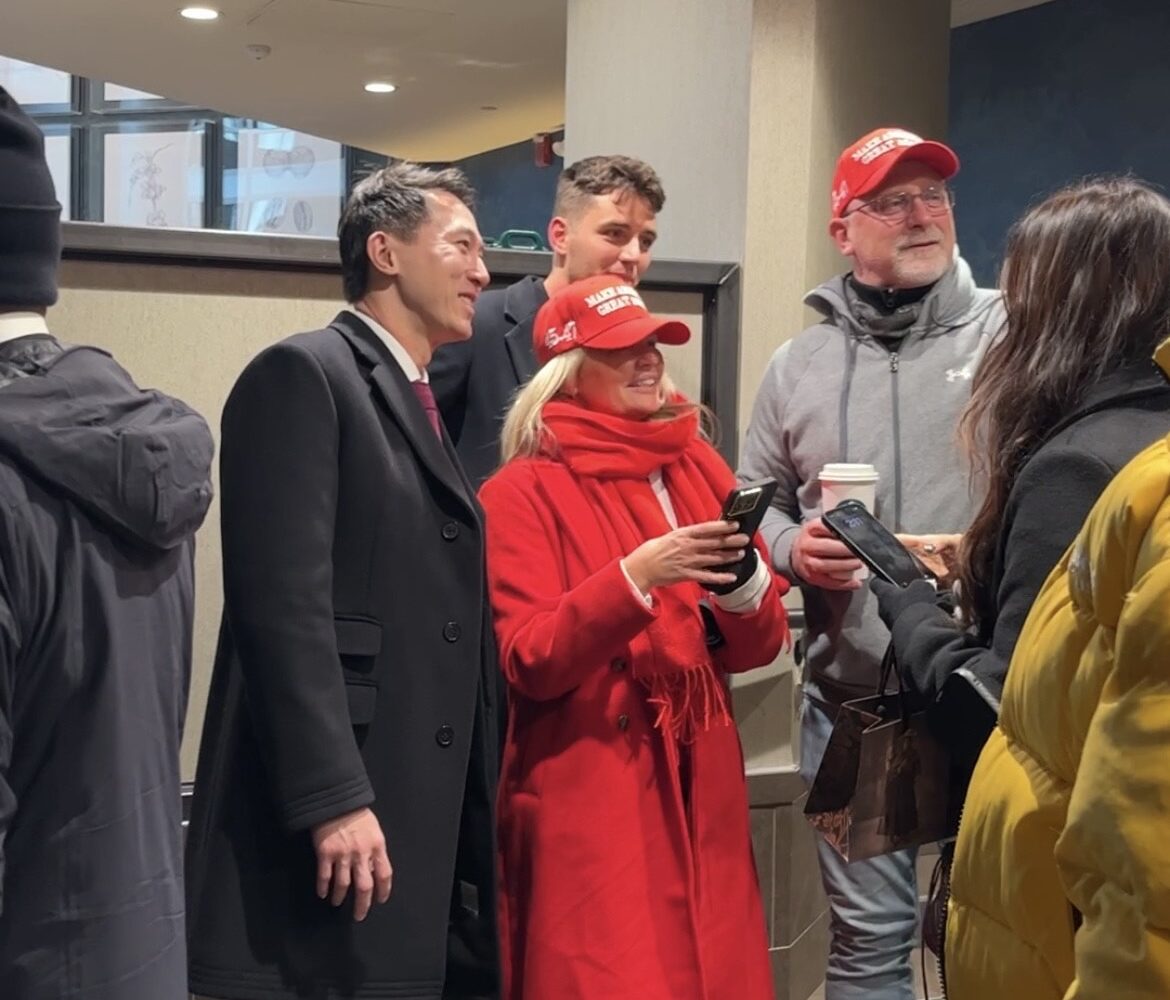Contents
An old maxim holds that history repeats itself: first as tragedy, then as farce. During his previous Oval Office stint, Donald Trump scrambled this order, bouncing between the two.
The numbers alone are jarring—and weird. Three government shutdowns. Two impeachments. An estimated 261 rounds of golf. A bizarrely competitive 29-second handshake with French president Emmanuel Macron. There was the time Trump insisted, without evidence, that he won an election he lost, ultimately resulting in January 6. There was the time his administration insisted, without evidence, that his inauguration crowds were the largest ever, ultimately resulting in Sean Spicer banging bongos on Dancing With the Stars.
Trump’s penchant for chaos and absurdity was felt worldwide, but nowhere more acutely than here. Washington is the nation’s capital, a place of laws and norms and institutions that the then-President spent four years flouting and rattling—delighting supporters eager for more. The District is also a city where a whole bunch of everyday folks work and live, a place that couldn’t accommodate Trump’s nixed idea to have a Bastille Day–inspired military parade through our streets, in part because heavy battle tanks would have damaged them.
Now he’s back. What’s next is anyone’s guess—including Trump, whose reality-TV-honed instinct for ginning up suspense often supersedes any concepts of a plan. For DC, only one thing seems certain: Life will again at times be both alarming and ludicrous. Not necessarily in that order.
The Purge
Trump and his allies want to make the federal government smaller—and a whole lot more partisan. They should be careful what they wish for.
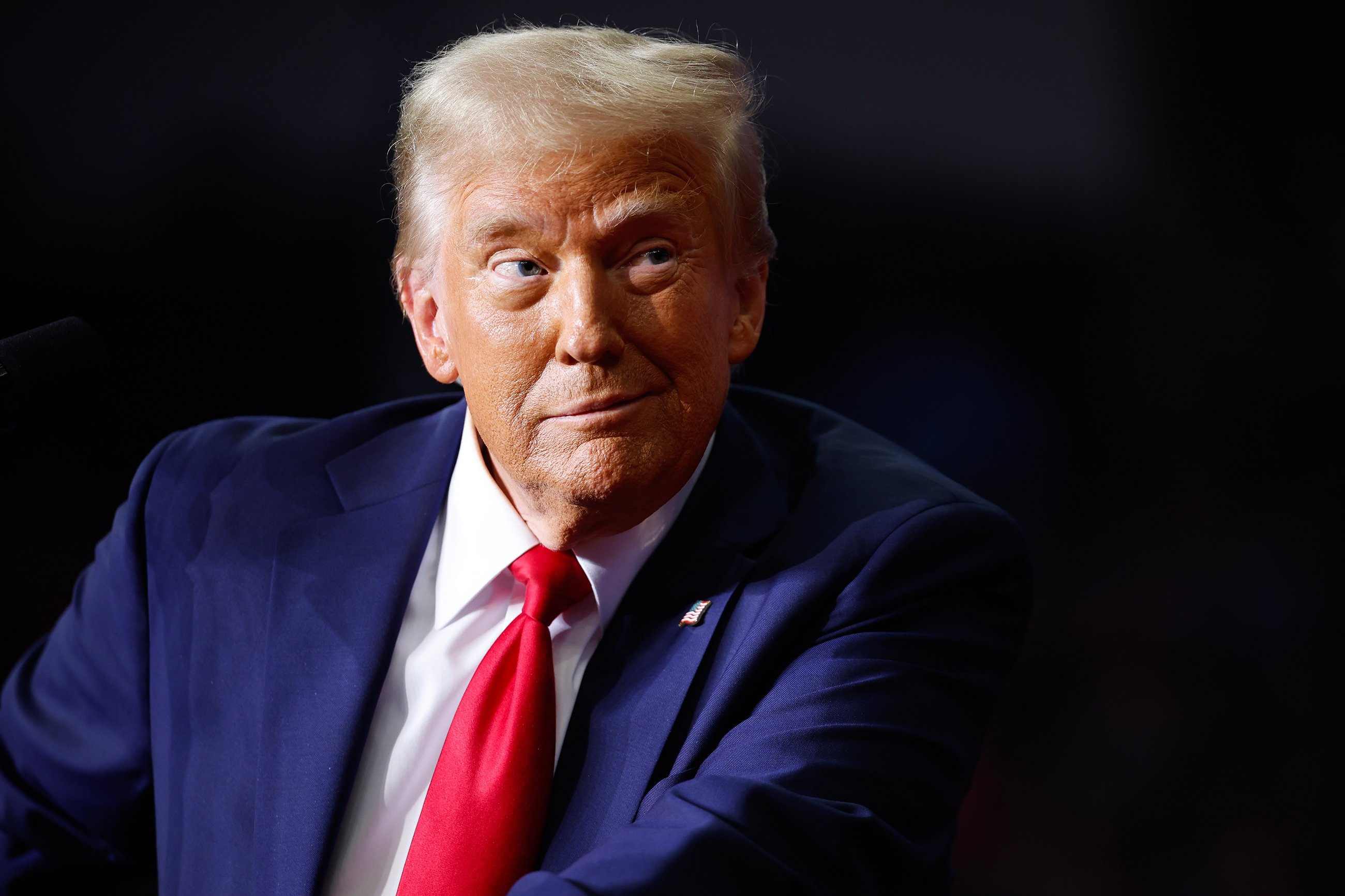
Richard Nixon was inaugurated in 1969 determined to bend the civil service to his will. The problem, in his view, was one of “responsiveness.” Not to the American people but to what Nixon saw as a higher authority: the White House. His solution was to place loyalists throughout the federal government, an effort that fizzled out as his presidency imploded.
Donald Trump hopes to finish what Nixon started. He issued an executive order toward the end of his first term (later rescinded by Biden) that would have reclassified tens of thousands of government workers as “Schedule F” employees, turning them into at-will workers the President could fire at any time, for almost any reason. Couple that with the so-called Department of Government Efficiency—a proposed nongovernmental organization run by billionaires Elon Musk and Vivek Ramaswamy, charged with identifying ways to cut government spending and staffing—and it’s clear that the US civil service, constructed to be merit-based ever since a disgruntled job seeker shot President Garfield in 1881, faces a potentially parlous future.
To some conservatives, the civil service’s apolitical sheen has always been a lie. In their manifesto for a MAGA administration, the authors of Project 2025 argue that liberals “burrow in” to the bureaucracy under cover of professionalism, effectively functioning as political appointees. Trump’s desire to root them out, the document argues, merely reflects the fact that “an autonomous bureaucracy has neither independent constitutional status nor separate moral legitimacy.”
Max Stier is president of the Partnership for Public Service, a nonpartisan group that advocates for better government. He’s seen government-reform efforts come and go and says that “what is on tap right now is qualitatively different” from previous reimaginings, as Trump’s plans would take the US “substantially backward, not forward” by returning to a 19th-century era when “we had corruption and incompetence in government.”
Schedule F “says nothing about the capacity of government to produce results,” says Don Kettl, former dean of the University of Maryland’s School of Public Policy. People exercised about the “deep state” still expect airplane inspectors to keep them safe in the skies, to get their Social Security checks on time, and to buy deli meat that doesn’t kill them. “There are so many cases where professionalism really matters,” Kettl says, “and where the lack of professionalism could have devastating consequences in ways that would undermine the very political base and the kinds of concerns that the administration is trying to pursue.”
Military veterans, a group that broke heavily toward Trump in the election, could also feel pain from his team’s proposals. Vets make up 28 percent of the federal workforce, says Jacqueline Simon, policy director for the American Federation of Government Employees, the largest union of federal workers. If Ramaswamy were to achieve his stated goal of cutting 75 percent of the entire federal workforce, notes AFGE president Everett Kelley, a half million veterans could lose their jobs.
Washingtonian couldn’t get any response when we tried to interview James Sherk, who shepherded the original Schedule F into existence. But public statements from Trump confidants cast some doubt on the next administration’s ability to turn their ideas into policy. In an interview with Fox News, Ramaswamy showed little grasp of how many civil servants actually exist (he claimed 4 million—the actual number is 2.1 million), their work hours, or the processes that could legally remove many of them from their jobs. Moreover, President Biden managed to push through a rule last April that could tie up, for at least a year, any attempt to reinstate Schedule F or fire federal employees.
Neither of those things may matter to the rules shmules guys who tend to surround Trump. And even persistent Trump critics like Virginia Democratic senator Tim Kaine admit that Biden’s rule is likely to be a speed bump. “The combination of regulation and our ability to insert ourselves as Congress to block foolishness is there,” Kaine says, “but it’s a guardrail, not a guarantee.” Stier would like to see federal agencies get better at PR—he cites recent in-depth profiles of civil servants by Michael Lewis and W. Kamau Bell in the Washington Post—so the public doesn’t see them as a faceless deep state.
Kettl says the ultimate guardrail might be how these cuts land on people who voted for Trump: “As powerful as the President is, this is an enormous sprawling government, and it would be folly for the White House to try to run everything from the Oval Office.” To wit: George W. Bush’s presidency never recovered from his administration’s botched response to Hurricane Katrina. “The failure to produce results can have catastrophic political results,” Kettl says. “So either the easy way or the hard way, they will discover that results matter.”
Back to Top
Now What?
From the Smithsonian to self-governance to swiping right (or left), Trump’s second act could mean big changes for city life

Will We Lose Our Collective Minds?
Two years into Trump’s first term, roughly two-thirds of Americans in a national survey said the current political climate was a “significant source of stress.” His return to Washington—alongside a Republican-controlled Congress and an increasingly conservative Supreme Court—promises to heighten anxiety in a deeply blue city that overwhelmingly voted for Democratic nominee Kamala Harris and that values political stability.
If the promised and planned upheavals of Trump’s second term come to fruition and all feel like too much, Washingtonians will need help coping. Capitol Hill therapist Monica Band recommends making conscious efforts to control what we can: Stay active, eat well, limit substance use, and establish a healthy work/life balance. “These are physical determinants of mental health,” she says, “and they’re often low- or no-cost to start.”
Will DC Become a Protest Battleground?
Proposed Trump policies such as mass deportations will likely produce backlash—and, if his previous term is any guide, significant protests. DC is accustomed to large, permitted demonstrations, but Trump has voiced disdain for protesters, reportedly suggesting to General Mark Milley in 2020 that they should be beaten and shot. The same year, Park Police and National Guard troops used tear gas to clear demonstrators from Lafayette Square, seemingly so Trump could pose with a Bible in front of St. John’s Church, declaring, “I am your President of law and order.” This time around, he may feel even less restraint.
How Will the Washington Post Bounce Back?
The Biden years were arduous for our hometown daily. Trump’s departure coincided with large drops in readership and revenue. Buyouts and turmoil ensued. Publisher Fred Ryan left, followed by executive editor Sally Buzbee, who objected to new publisher Will Lewis’s plan to build a social-media “third newsroom.” There were allegations that Lewis tried to kill negative stories about himself, and then owner Jeff Bezos nixed a planned endorsement of Kamala Harris—costing the paper hundreds of thousands of badly needed subscribers. When morale couldn’t seem lower, Lewis ordered a full-time return to the office. With Trump back, the Post needs to find a new top editor and rebuild its sense of purpose and direction—all while pursuing stories that could land the publication in the President’s cross hairs and complicate things for Bezos, whose other companies do business with the government.
Is Federal Architecture Going Back to the Future?
The architectural wars may be back. During his first term, Trump signed an executive order that designated Classicism as the preferred style for federal buildings. He also appointed Justin Shubow, an outspoken critic of Modernism, to the Commission of Fine Arts, which oversees federal architecture.
The American Institute of Architects and other leading design groups criticized the move, arguing that communities should decide the question of style for themselves. Biden rescinded the order and ousted Shubow, who isn’t a practicing architect but could return with a renewed mandate. One of the first buildings to be affected may be the FBI’s headquarters—which the General Services Administration plans to relocate to Greenbelt but which Trump has argued belongs in the nation’s capital.
Will Our Arts and Culture Be MAGAfied?
The day after the election, artist Shepard Fairey—he of the Obama “Hope” poster—posted the image of a coffin on his Instagram. The recently departed? Democracy. The Trump administration will undoubtedly inspire a wave of artistic creativity—it may also target woke curators and art-related budgets.
Trump previously tried to eliminate all funding to the National Endowment for the Arts, only to see Congress keep the agency alive. In his second term, expect cuts and brain drain at the Smithsonian, where incoming Vice President JD Vance will join the board of regents. Even before the election, the head of the National Archives and Records Administration reportedly started finessing exhibitions to please conservatives, ordering that an image of Martin Luther King Jr. in a display be replaced with Richard Nixon and/or Ronald Reagan. Curators at public museums could feel similar or greater pressure to adhere to the MAGA worldview.
Will Trump Officials Still Be Social Pariahs?
Trump’s namesake hotel was a first-term safe space for his officials and supporters to congregate—and when they did venture into liberal DC, they risked social confrontations. Remember the protesters who interrupted Homeland Security Secretary Kirstjen Nielsen’s dinner at a Mexican restaurant after she defended family separations at the border? Or the bartender at a sushi spot who reportedly flipped off and cursed at senior adviser Stephen Miller, leading him to toss his $80 meal? This time, with no Trump hotel, a full GOP sweep of government, and an even larger cast of divisive characters, the MAGA crowd is likely to feel more omnipresent across the city. So will the clashes.
Is Home Rule in Trouble?
For decades, the District has been largely able to govern itself through a locally elected mayor and council. Will that continue? Congressional Republicans have in recent years introduced bills to erode or end home rule, and Trump has threatened to “take over the horribly run capital of our nation.” Political operative Chuck Thies states the fear among area Democrats bluntly: “If the Republicans win control of Capitol Hill, home rule as we know it is dead.”
Or maybe not. Abolishing home rule entirely would require a filibuster-proof Senate majority—something the otherwise triumphant GOP lacks—and reviving the five-member Financial Control Board that ran DC from 1995 to 2001 would make the party responsible for delivering actual results. Still, Republicans are now further empowered to bigfoot locals on a number of pet issues ranging from law enforcement to school vouchers. At the very least, expect more meddling.
What Happens to the January Sixers?
Hey, remember when Trump inspired his followers to attack the US Capitol after he lost an election? It was kind of a big deal here, but the American public yawned and sent him back to the White House anyway. So what does that mean for the Department of Justice’s biggest-ever investigation, which led to more than a thousand criminal cases? Trump has mused about pardoning the rioters, an action that might actually be unpopular: Most Americans think the sentences handed down were, if anything, too lenient. Still, such a move would be popular with much of his base and especially his most fervent fans—a group that, not coincidentally, includes a lot of people who were present on January 6.
Will the Government Be Relocated?
Some of the hundreds of thousands of area federal workers may soon face a choice: Leave your home or lose your job. Trump campaigned on relocating as many as 100,000 positions to “new locations outside the Washington Swamp.” His party controls Congress and has made “the deep state” a rhetorical piñata. Elon Musk seems eager to shake things up. Forced relocations are a real possibility and, at a large enough scale, could devastate the local economy.
On the other hand, Trump’s first administration ordered hundreds of Bureau of Land Management and Department of Agriculture employees to Colorado and Missouri, respectively. Mass attrition ensued, productivity suffered, and positions were moved back to DC under President Biden. “It was a bad experience and net loss for American taxpayers,” says Laura Dodson, acting vice president of AFGE Local 3403. If Trump pushes for a sequel, he risks another flop.
Will Trump Supporters Be Able to Find Dates?
Following an election that saw men break for Trump—and women not so much—social-media interest in South Korea’s no-dating-men “4B” movement surged. Meanwhile, a Pew Research Center poll finds that 45 percent of Democrats on the dating market say they wouldn’t consider going out with a Trump voter.
For conservatives coming to work in deep-blue DC, this augurs a repeat of Trump’s first term—in which White House staffers, mostly male, had trouble getting dates. Or maybe things will improve: A GOP governing trifecta could make it easier for right-wing daters to find each other. One 23-year-old international-development worker who prefers dating fellow conservatives tells Washingtonian it can be tough to ID like-minded romantic prospects at liberal-packed bars. “Hopefully as [being conservative] becomes a bit more normalized in the city for the next four years, maybe some tensions around openly talking about that go down,” she says. If not, Trumpers may once again be on the receiving end of locals swiping left.
Will Trump Remain a Local-Business Landmine?
In 2017, the owner of the hoagie chain Taylor Gourmet attended a small-business roundtable with President Trump—causing an immediate local uproar and calls for boycotts, despite the owner saying he was apolitical. When the company abruptly closed all 17 of its area stores and filed for bankruptcy the following year, some insiders blamed the incident as the beginning of the end. (The official line: The business had expanded too quickly.) Even vaguely associating with Trump continues to be toxic in a city where people often align their spending and left-leaning political views. After the Brookland pizzeria Menomale congratulated Trump on his November victory and offered to give a pizza oven to the White House, it faced a wave of backlash, leading the owners to clarify that they’re registered Democrats.
Is Remote Work Over?
More than half of federal employees aren’t eligible for telecommuting. As for those who are? A report last spring by the Office of Management and Budget found that they spent 61.2 percent of their time working onsite. Even so, the Trump administration has called for a full return to the office.
Vivek Ramaswamy, one of Trump’s efficiency czars, has touted bringing back federal workers five days a week as a way of spurring them to quit voluntarily as the administration tries to downsize the government. Meanwhile, Mayor Muriel Bowser appears to support some type of return-to-office push as a way of fully reviving downtown’s pre-pandemic economy. However, Trump and others may soon discover that collective-bargaining agreements negotiated by many federal workers include telecommuting provisions—and will be hard to undo.
Back to Top
Who’s Who of Trump 2
Old hands and Fresh disruptors Highlight a colorful cast of characters who have shown—for now at least!—loyalty to trump and zeal for his vision

The Adult in the Room
Susie Wiles
2024 campaign co-chair; incoming White House chief of staff
Nicknamed “the ice maiden” and charged with bringing order to Trump’s chaos, the first female White House chief of staff is known for a steely demeanor, aversion to the spotlight, and willingness to tell her boss no.

The Immigration Hardliner
Stephen Miller
Deputy chief of staff for policy
Miller—who was noticeably chosen for a role that doesn’t require Senate confirmation—is tasked with turning Trump’s promise of orchestrating the “largest deportation program in American history” into reality.

The Tariff Czar
Jamieson Greer
US trade representative nominee
By promoting this apprentice to his first-term trade representative, Robert Lighthizer, Trump appears committed to fulfilling his promise of heavy tariffs likely to rattle both allies and adversaries.
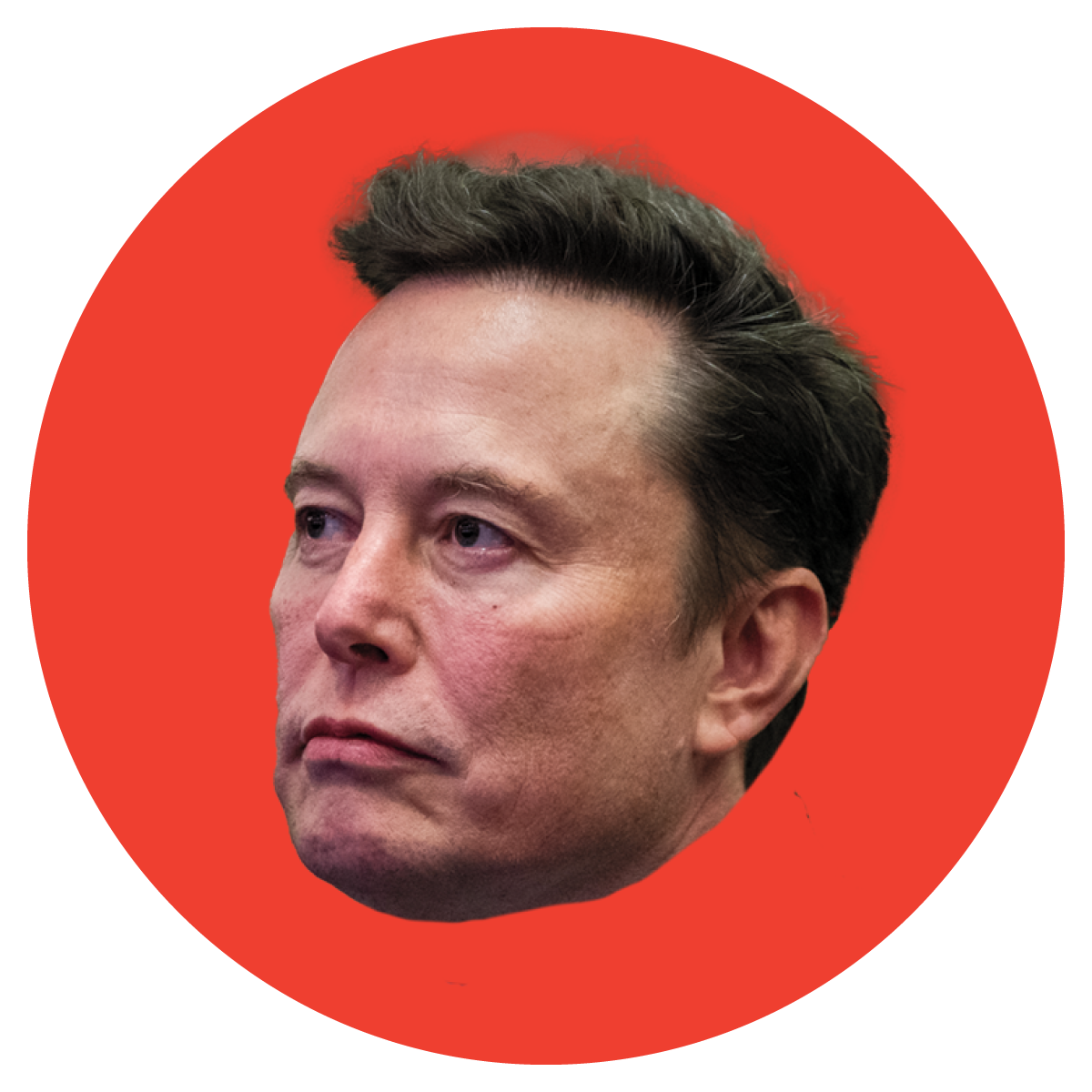
The MAGA Mogul
Elon Musk
Co-head of the Department (not really, but play along) of Government Efficiency
By allowing the eccentric billionaire to join his post-election call with Ukrainian leader Volodymyr Zelensky, Trump showed how Musk could enjoy influence far beyond efforts to shrink the federal bureaucracy.

The MAHA Aristocrat
Robert F. Kennedy Jr.
Health and Human Services Secretary nominee
Armed with, uh, unconventional views on vaccines and other scientific matters, the former third-party candidate and Democratic family scion should have no shortage of ideas about how to “Make America Healthy Again.”

The Quiet Liaison
Brian Jack
Congressman-elect from Georgia
Before he was elected to Georgia’s 3rd Congressional District, Jack was one of Trump’s integral political strategists. Now the onetime aide will be Trump’s eyes and ears on Capitol Hill.
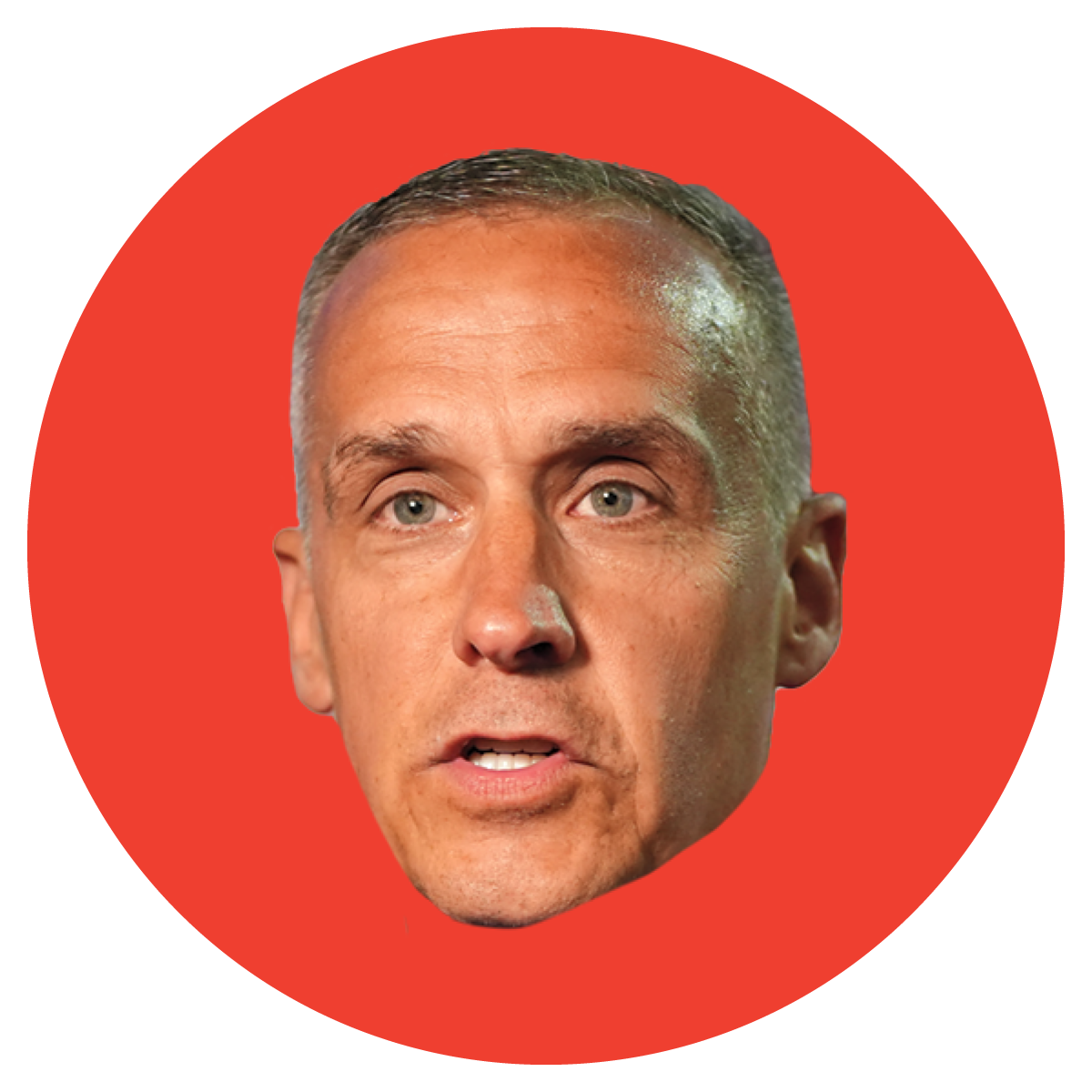
The Outside Agitator
Corey Lewandowski
Informal adviser
Trump’s original 2016 campaign manager isn’t slated to have an official position in his second administration. But the scandalized operative wasn’t formally involved at the outset of the 2024 campaign, either—only to later be brought back into the fold.
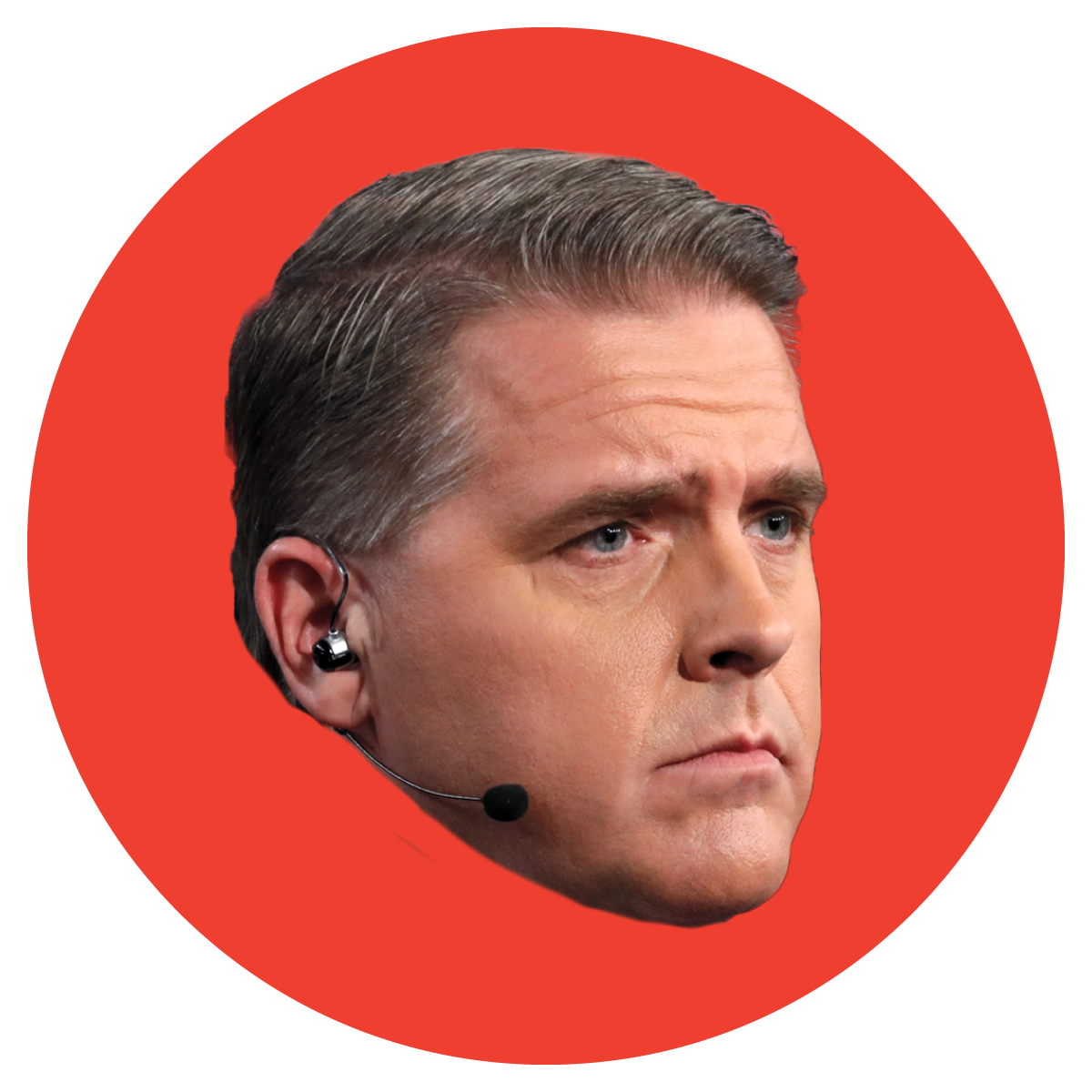
The Cable Guy
Scott Jennings
CNN contributor; future White House press secretary?
History may remember 2024 as the podcast election, but Trump still feasts on cable news. Jennings’s on-air defenses of the President-elect have earned him plaudits as the country’s most effective Trump surrogate.
Back to Top
The Trump Family
Last time around, some members of the Trump family took prominent official and unofficial roles in the White House—and also took flak for them. What’s next?
Donald Trump Jr.
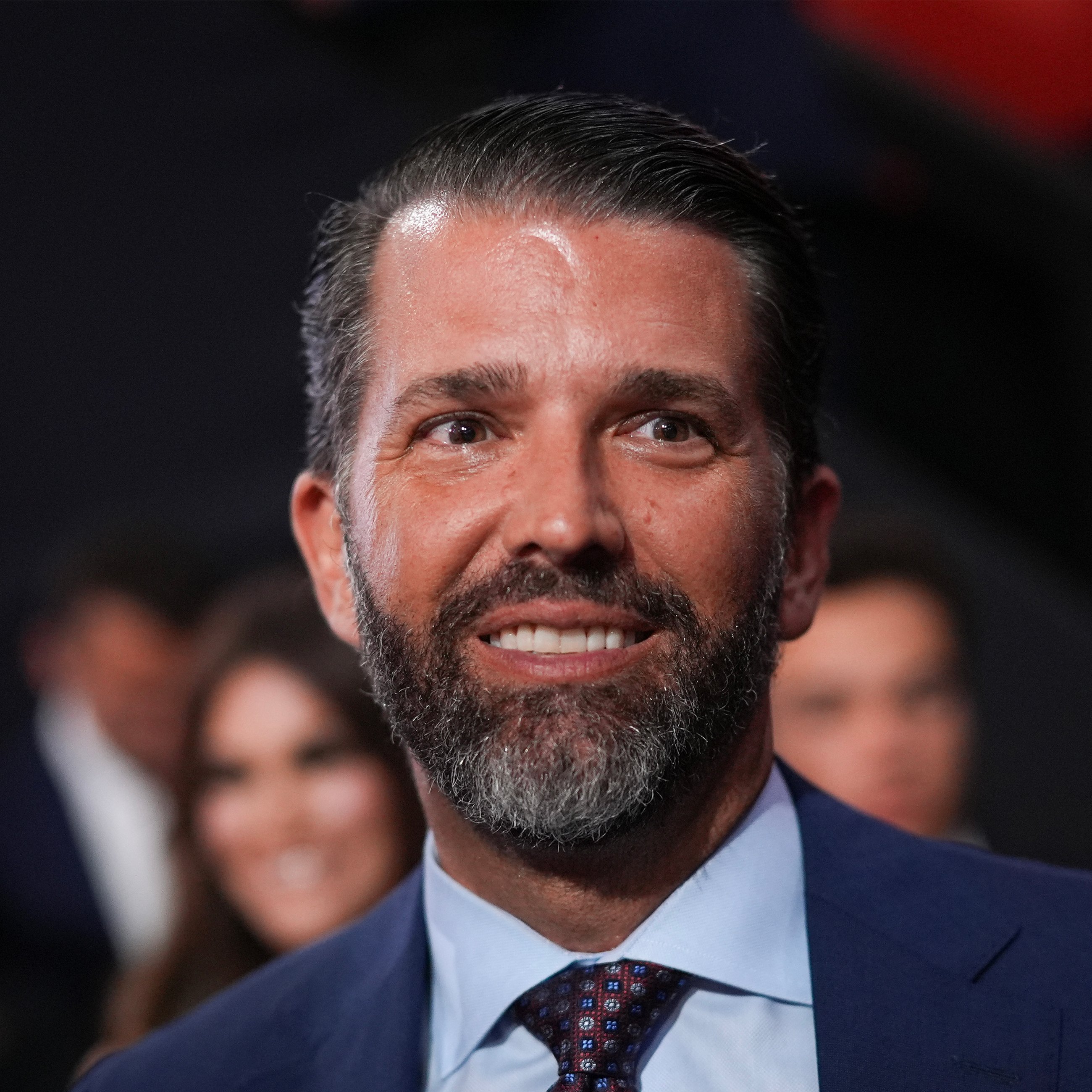
The honorary co-chair of his father’s transition team is joining 1789 Capital, a VC firm headed by a major Trump campaign donor that invests in ideologically conservative projects such as Tucker Carlson’s media company.
Tiffany Trump

As her father revealed on the campaign trail in October, Tiffany is expecting her first child. She lives in Florida with husband Michael Boulos, the son of a Lebanese billionaire.
Eric and Lara Trump
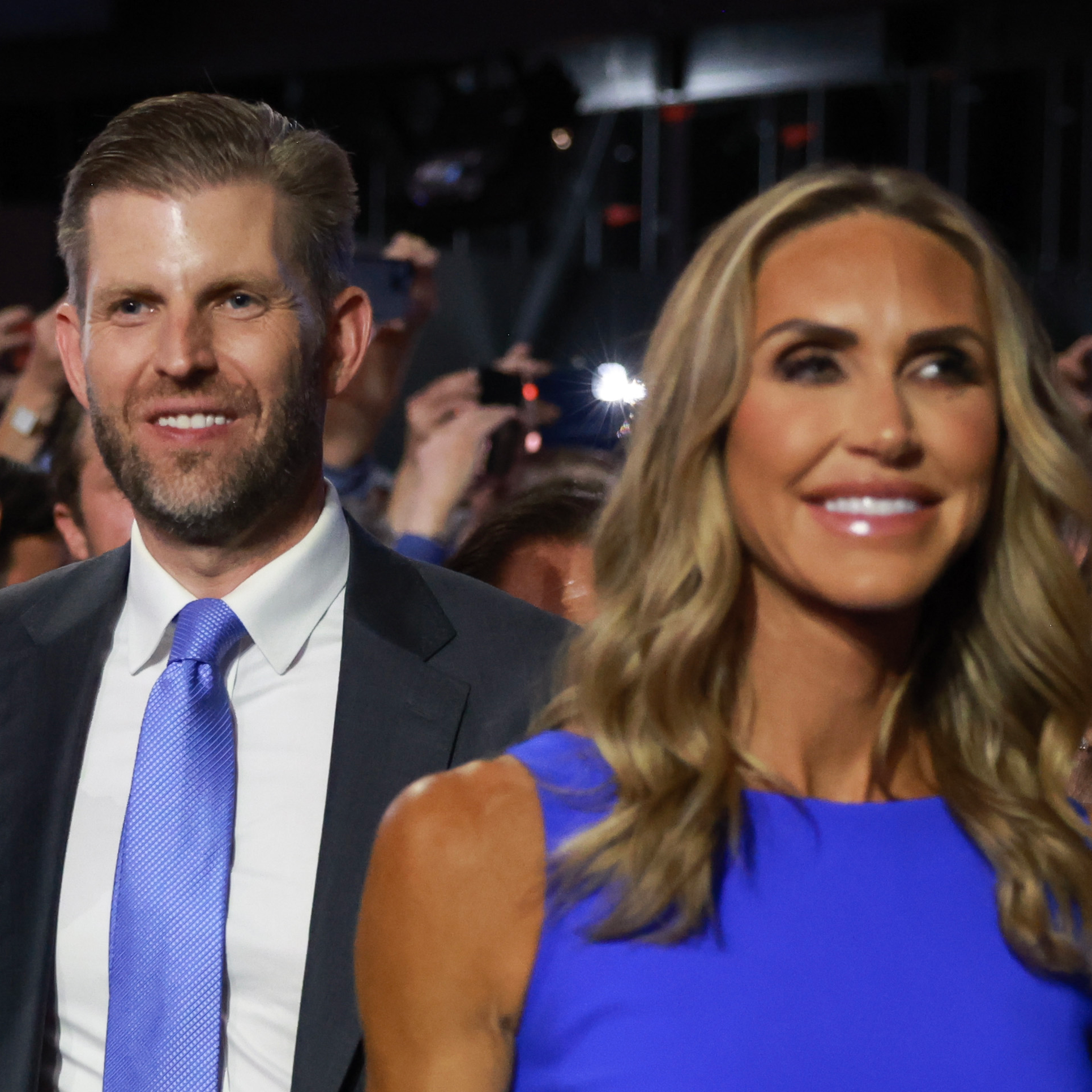
While Eric hasn’t revealed any plans to leave his executive role in the Trump Organization, his wife and former Republican National Committee co-chair Lara has expressed interest in filling the Florida Senate seat vacated by Secretary of State nominee Marco Rubio.
Barron Trump
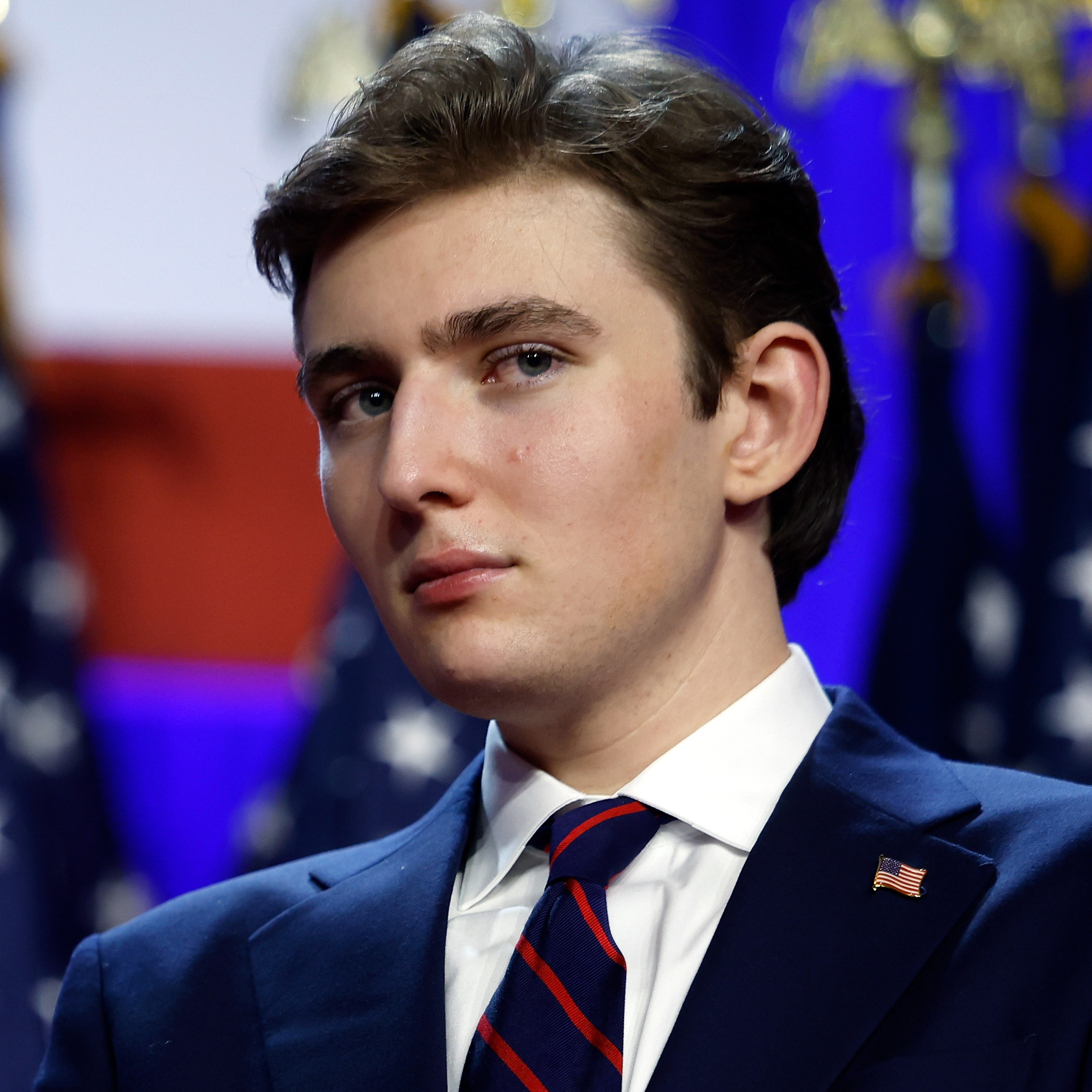
The youngest Trump will once again spend his dad’s tenure in New York—this time as a freshman at NYU’s business school. Are politics in his future? Lara calls him the “sleeper” behind the campaign’s success.
Melania Trump
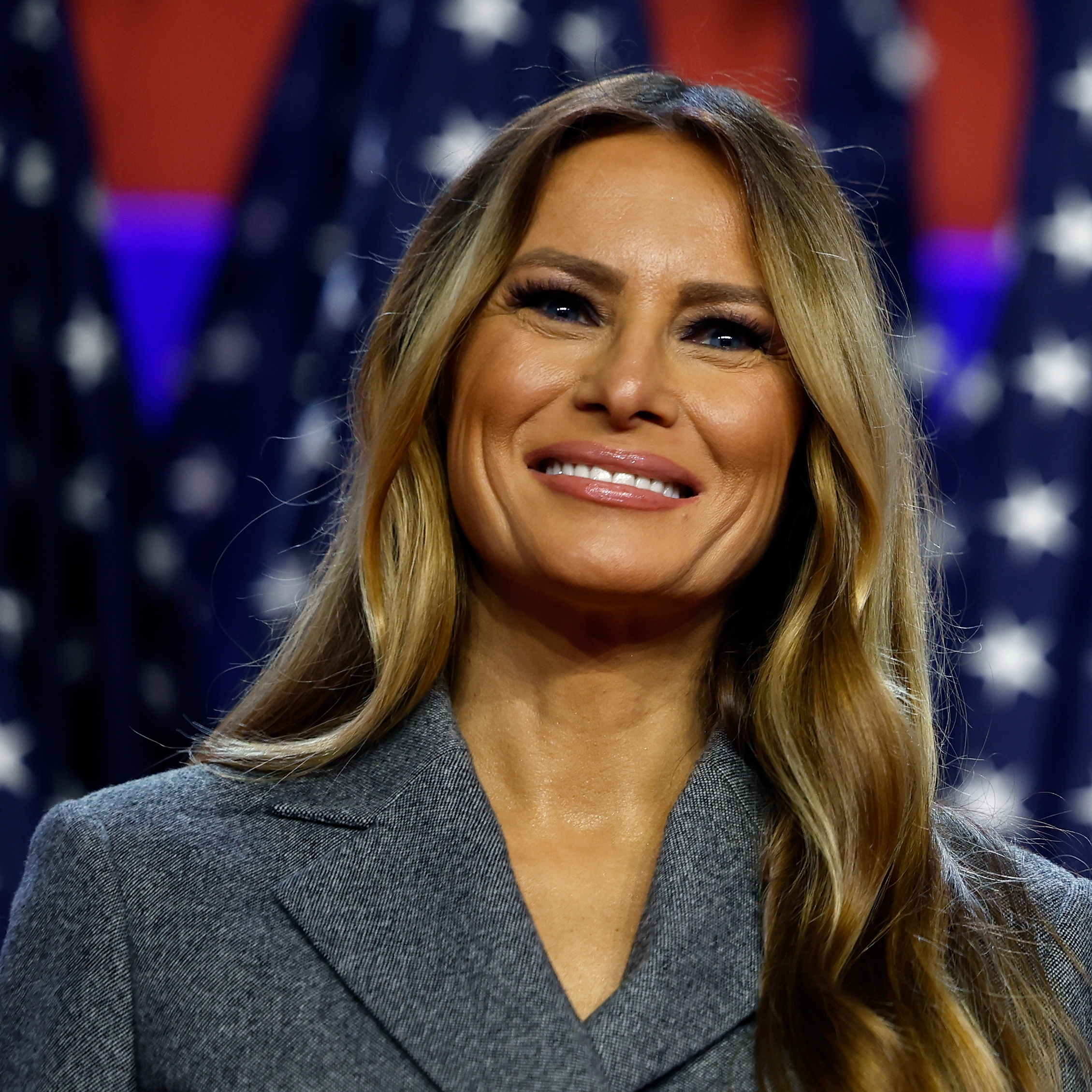
The First Lady is reportedly not expected to return to the White House full-time—instead, she’ll live primarily between the family’s New York and Palm Beach residences.
Mary Trump
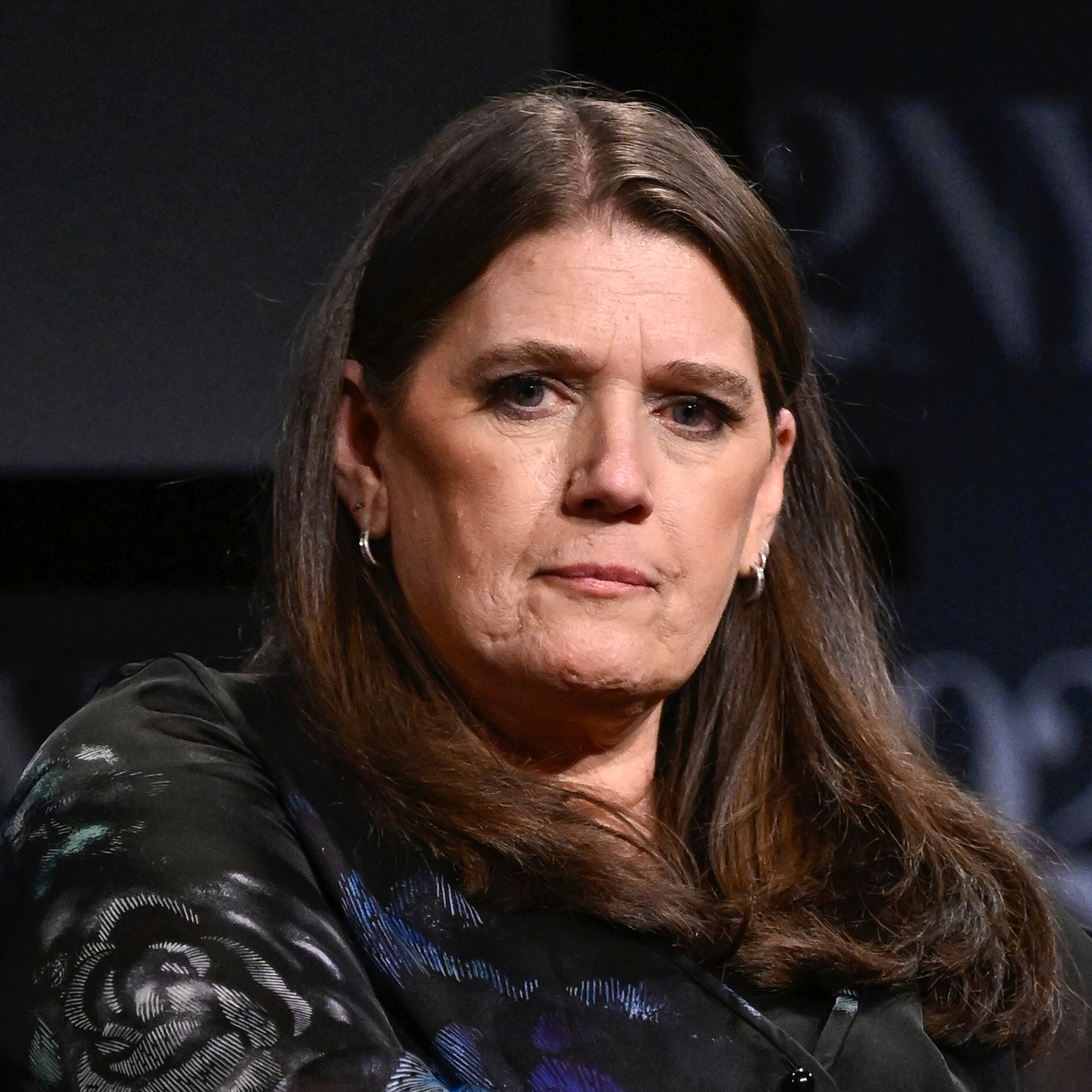
Trump’s least favorite niece remains a vocal critic of her family, posting anti-MAGA videos daily—sometimes multiple times—on her YouTube channel.
Ivanka Trump and Jared Kushner
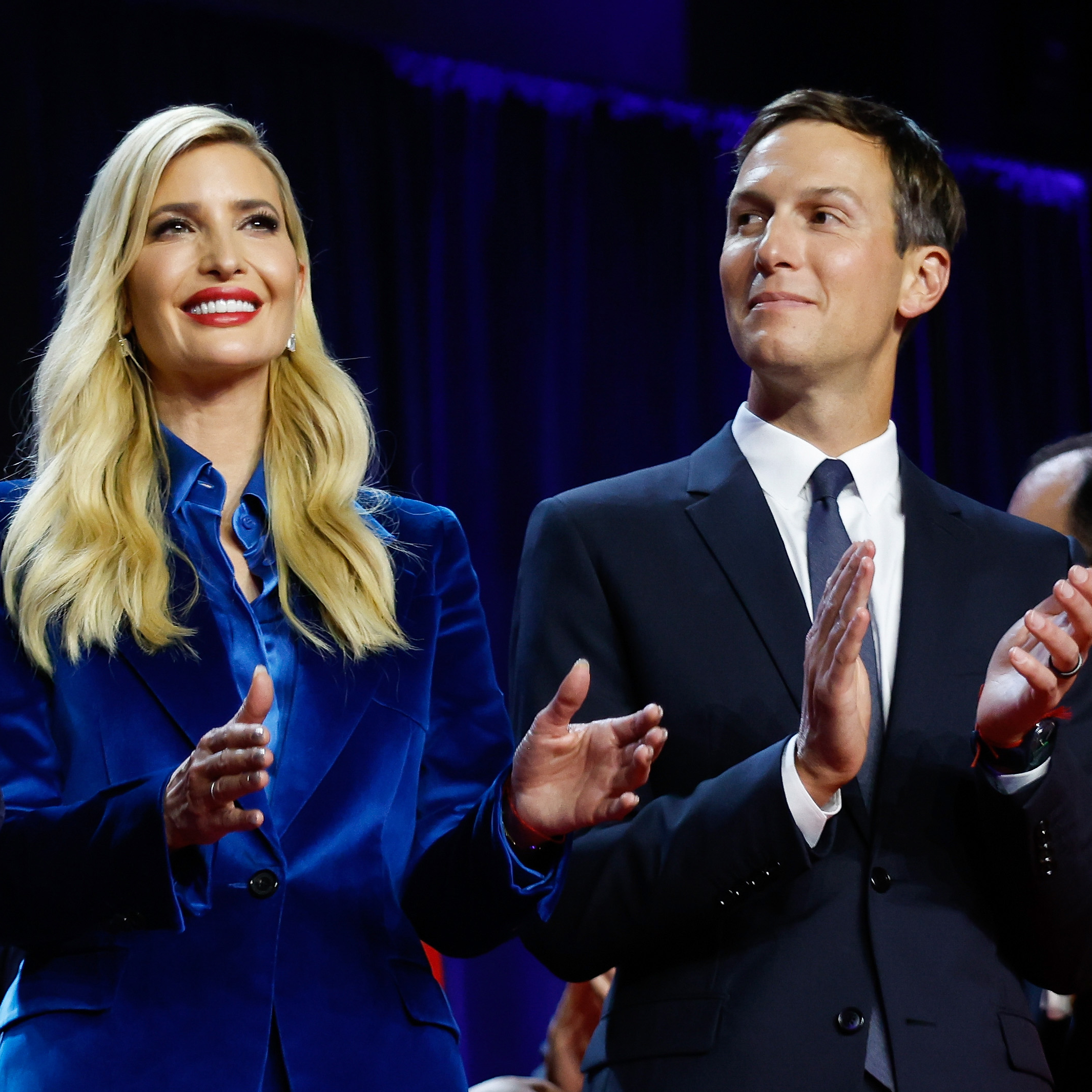
In 2022, Ivanka announced an indefinite departure from politics to focus on her family. Husband Jared is expected to act as an outside adviser to the administration on the Middle East.
Back to Top
MAGA Moves In
Which neighborhoods in the deep-blue DC area will members of the Trump administration and their assorted allies make more red? Here are our best guesses.
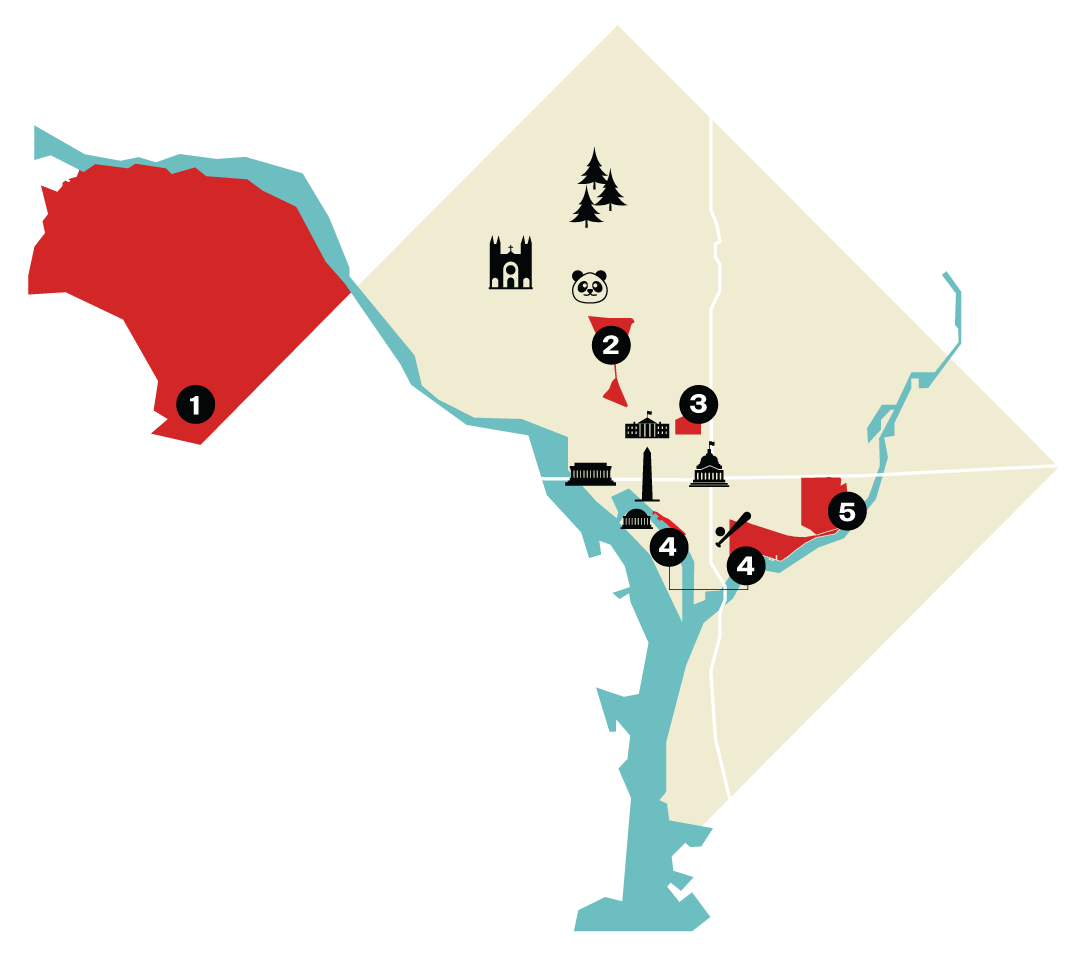

McLean
Following the election, Virginia governor Glenn Youngkin invited incoming Trump officials to live in his state. This wealthy NoVa suburb offers lower taxes, European-inspired architecture, and gated security—making it a perfect place to plot the dismantling of the administrative state, all while enjoying Potomac River views.

Kalorama
Home to Ivanka Trump and Jared Kushner the last time around, Kalorama saw significant sales action in this year’s election aftermath: At least nine $3 million–plus properties have sold, including a $9.35 million house built in 1924 by Adolf Miller, former board member of the Federal Reserve. Jeff Bezos, meet your new MAGA neighbors?

CityCenterDC
This posh complex near the White House was home to Stephen Miller and Hope Hicks during Trump’s first term and could again be an option for deep-pocketed staffers: One-bedrooms can run more than $5,850 a month.

The Wharf/Navy Yard
During the first Trump administration, younger aides flocked to apartment buildings like Lex & Leo and One Hill South, where they found a degree of freedom from liberal judgment. Expect a repeat influx.

Hill East
The Trumpiest neighborhood in the city? Hill East, where the President-elect got 20.9 percent of the vote, much to the delight of the January 6 inmates held in the DC jail there. Junior MAGA-ites will take note.
Back to Top
Red Zones
The last time Trump was in the White House, his eponymous DC hotel was the go-to gathering place for the MAGA crowd. Now that it’s gone, where will they hang out? We have some ideas.
The Big Board
location_on 421 H St., NE
language Website

During the pandemic, this H Street burger bar became a right-wing darling for openly defying the city’s vaccine and mask mandates. More recently, it’s been a recurring meetup spot for the Washington, D.C. Young Republicans.
Shelly’s Back Room
location_on 11331 F St., NW
language Website

This cigar bar was “massively popular” with Trumpland staff during the last administration, says Ethan Lane, lobbyist for the National Cattlemen’s Beef Association: “For those of us that smoke cigars, I don’t think we ever were there more than we were in the four years of the Trump administration.”
The Capital Grille
location_on 601 Pennsylvania Ave., NW
language Website
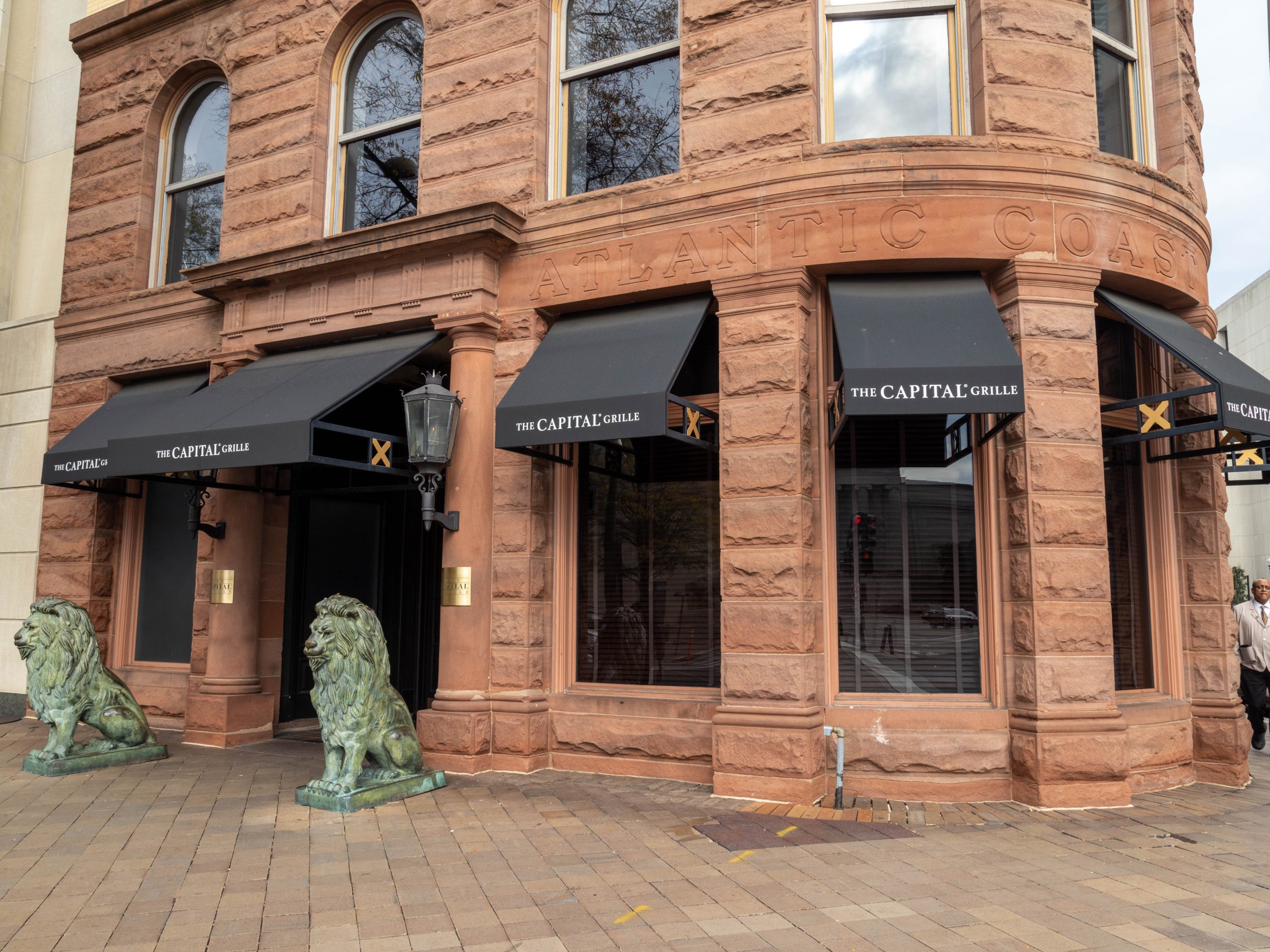
GOP congressional stalwarts Ted Cruz and Steve Scalise are among the regulars of this Capitol Hill steakhouse, where Republicans outspent Democrats nearly 13 to one this past election cycle, according to campaign-finance reports.
Waldorf Astoria
location_on 1100 Pennsylvania Ave., NW
language Website
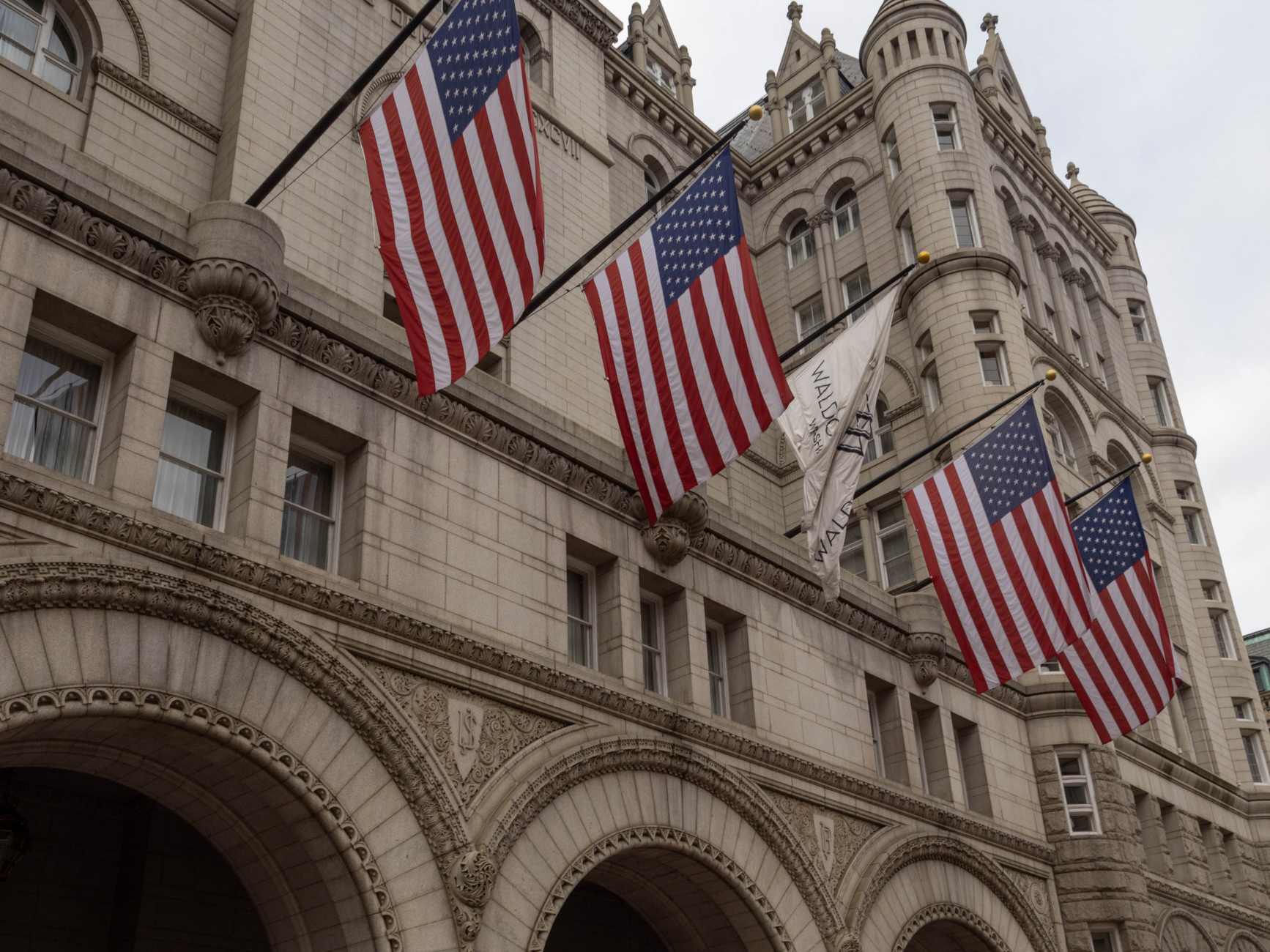
The Old Post Office building used to be the MAGA hub in DC. While Trump’s name is no longer on the front, the hotel might still be a hangout for the same crowd out of sheer habit.
Royal Sands Social Club
location_on 26 N St., SE
language Website

Trump has made Florida his home base and is already drawing heavily from the Sunshine State to fill his cabinet. Might the Mar-a-Lago crowd flock to DC’s only Florida-themed bar, which looks like a giant swimming pool and is co-owned by a former Republican political operative?
Dirty Water
location_on 816 H St., NE
language Website

The H Street sports bar, which hosted Republican debate and election-night watch parties, is the rare watering hole in DC to publicly support Trump.
Back to Top
Remember the Time?
A look back at some of the most preposterous behavior from Donald Trump’s previous time in the White House
-
-
January 21, 2017
Speaking at CIA headquarters on his first full day as President, Trump claims an inaugural crowd of “a million and a half” people and pressures the National Park Service to find proof.
-
February 2, 2017

Adviser Kellyanne Conway defends a Trump travel ban connected to seven majority-Muslim countries by invoking “the Bowling Green massacre,” a Kentucky terror attack that did not, in fact, happen.
-
February 13, 2017

The White House credentials Gateway Pundit, a right-wing website known for publishing false stories—such as claims that photos of a victory parade for Cleveland’s NBA title were actually of a Trump rally.
-
May 21, 2017

The orb.
-
May 31, 2017
 covfefe
covfefe -
June 16, 2017
Trump appoints his son Eric’s wedding planner, Lynne Patton, to run federal housing in New York and New Jersey. She’s later fined for Hatch Act violations.
-
July 13, 2017

While in Paris for a state visit, Trump turns to French first lady Brigitte Macron and says, “You’re in such good shape.”
-
July 24, 2017
During a speech to the National Boy Scout Jamboree, Trump attacks Barack Obama, Hillary Clinton, and “the fake media.”
-
August 21, 2017

Ignoring a shout of “Don’t look!” from one of his aides, Trump looks directly into a solar eclipse—sans protective eyewear—while pointing at the sun. -
October 8, 2017

Trump defends tossing paper towels into a crowd of Puerto Ricans at a hurricane-relief center by saying, “They had these beautiful, soft towels. Very good towels.” -
December 12, 2017

Chief of Staff John Kelly terminates former Apprentice star Omarosa Manigault Newman from her White House job. Trump later says she was always late and “people hated her.” -
January 2, 2018
On Twitter, Trump teases upcoming awards for “corrupt media,” takes credit for 2017’s lack of plane crashes, and says his nuclear button is “much bigger” than North Korean leader Kim Jong-un’s. -
January 6, 2018

Trump posts on Twitter that he is a “very stable genius.” -
February 5, 2018

Trump complains about “un-American” Democrats who didn’t stand and applaud during his first State of the Union address, saying “Can we call that treason? Why not?”
-
March 13, 2018

Trump fires Secretary of State Rex Tillerson via tweet. -
May 7, 2018

First Lady Melania Trump announces her “Be Best” anti-cyberbullying campaign. In late 2019, the hashtag #BeBest trends after her husband attacks teen climate activist Greta Thunberg (top) on Twitter. -
June 13, 2018

North Korean state TV airs footage of Trump saluting a North Korean military general. -
September 25, 2018
Trump tells the UN General Assembly, “In less than two years, my administration has accomplished more than almost any administration in the history of our country,” prompting laughter from the room. -
November 10–11, 2018
Trump misses memorial ceremonies in France and at Arlington National Cemetery, claiming, respectively, that (a) the weather was too rainy to drive or fly by helicopter and (b) he was busy making calls. -
December 24, 2018

Speaking to a seven-year-old calling into the government’s “Santa Tracker,” Trump questions the child’s belief in St. Nick, dubbing it “marginal” at that age.
-
January 14, 2019

Blaming the third government shutdown of his term, Trump serves an enormous spread of fast food to Clemson University’s national-championship-winning football team in the White House State Dining Room.
-
August 18, 2019
Trump confirms reports that he has directed administration officials to explore purchasing Greenland, an idea he compares to “a large real estate deal.” -
September 4, 2019

After incorrectly claiming that Alabama was in the path of Hurricane Dorian, Trump shows reporters a weather map—apparently doctored with a Sharpie—falsely showing that his claim was correct.
-
December 21, 2019

Days after becoming the third President to be impeached, Trump criticizes windmills during a speech, calling them “monsters” that “kill many bald eagles.” -
April 23, 2020
During a White House Covid briefing, Trump encourages government health officials to study disinfectant injections as a way of treating the virus. -
October 5, 2020
Following Covid treatment at Walter Reed, Trump reportedly wanted to be wheeled from the hospital before standing up and opening his shirt to reveal the Superman logo. -
November 4, 2020
With no projected winner and key battleground states still counting votes, Trump declares victory in the presidential election, which he lost.
-
Photographs of Wiles, Miller, and Jack by Chip Somodevilla/Getty Images.
Photograph of Greer by Tomasina Brown/USDA.
Photograph of Musk by Allison Robbert–Pool/Getty Images.
Photograph of Kennedy by Rebecca Noble/Getty Images.
Photograph of Lewandowski by Andrew Harnik/Getty Images.
Photograph of Jennings by Gage Skidmore/Flickr.
Photograph of crowd by PapaBear/Getty Images.
Photograph of Trump by Shealah Craighead.
Photograph of Trump by Pierre Suu/Getty Images.
Photograph of Trump with the orb by Mark Wilson/Getty Images.
Photograph of Trump in Tweet by Evan Vucci/AP Images.
Photograph of Newman by Mark Wilson/Getty Images.
Photograph of Tillerson by Alex Wong/Getty Images.
Photograph of Thunberg by Carl Court/Getty Images.
Photograph of Trump on phone by Shealah Craighead.
Photograph of Trump with fast food by Joyce N. Boghosian.
Photograph of Trump with map of Hurricane Dorian path by Chip Somodevilla/Getty Images.
Photograph of eagle by Getty images.
This article appears in the January 2025 issue of Washingtonian.
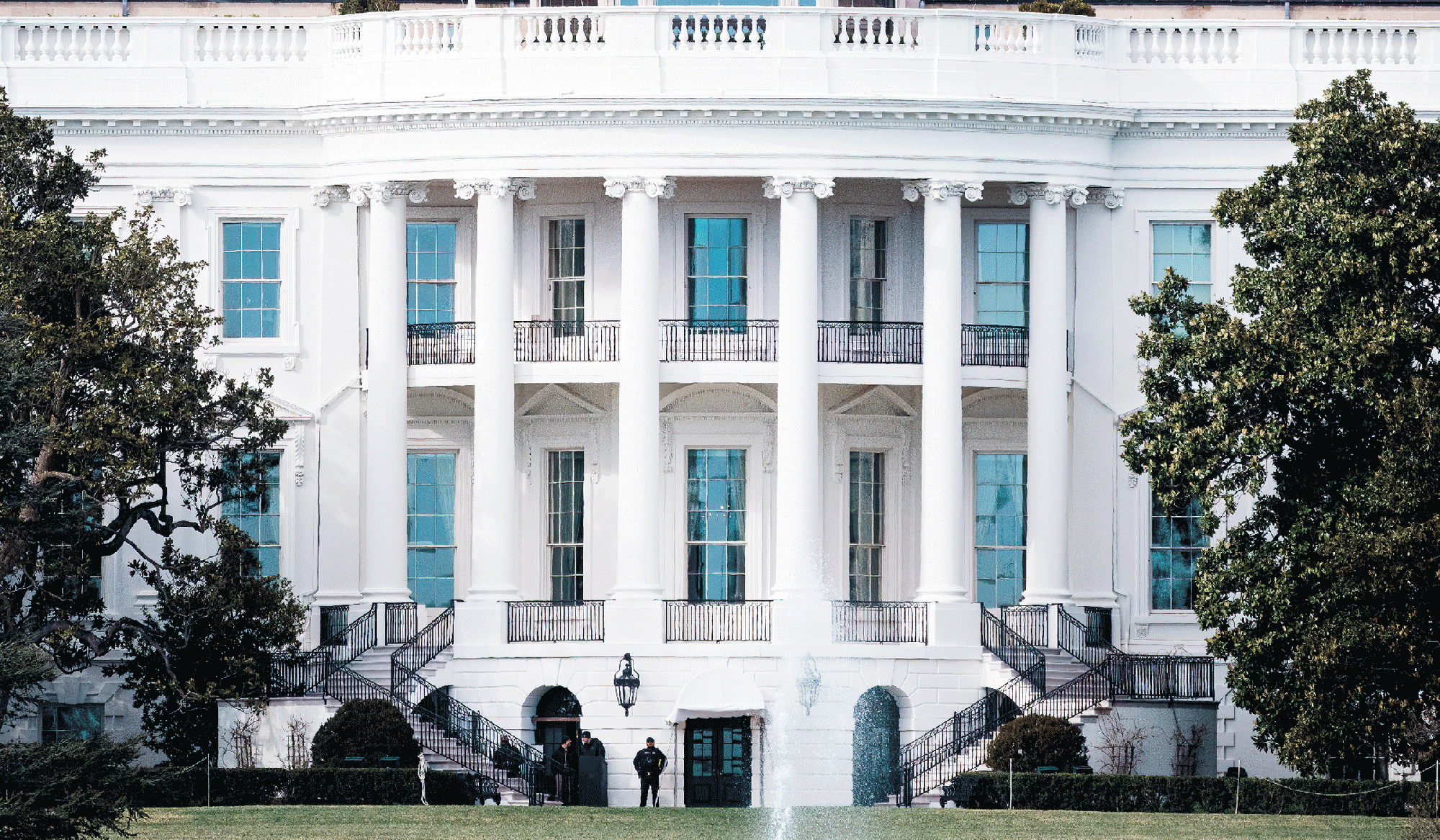
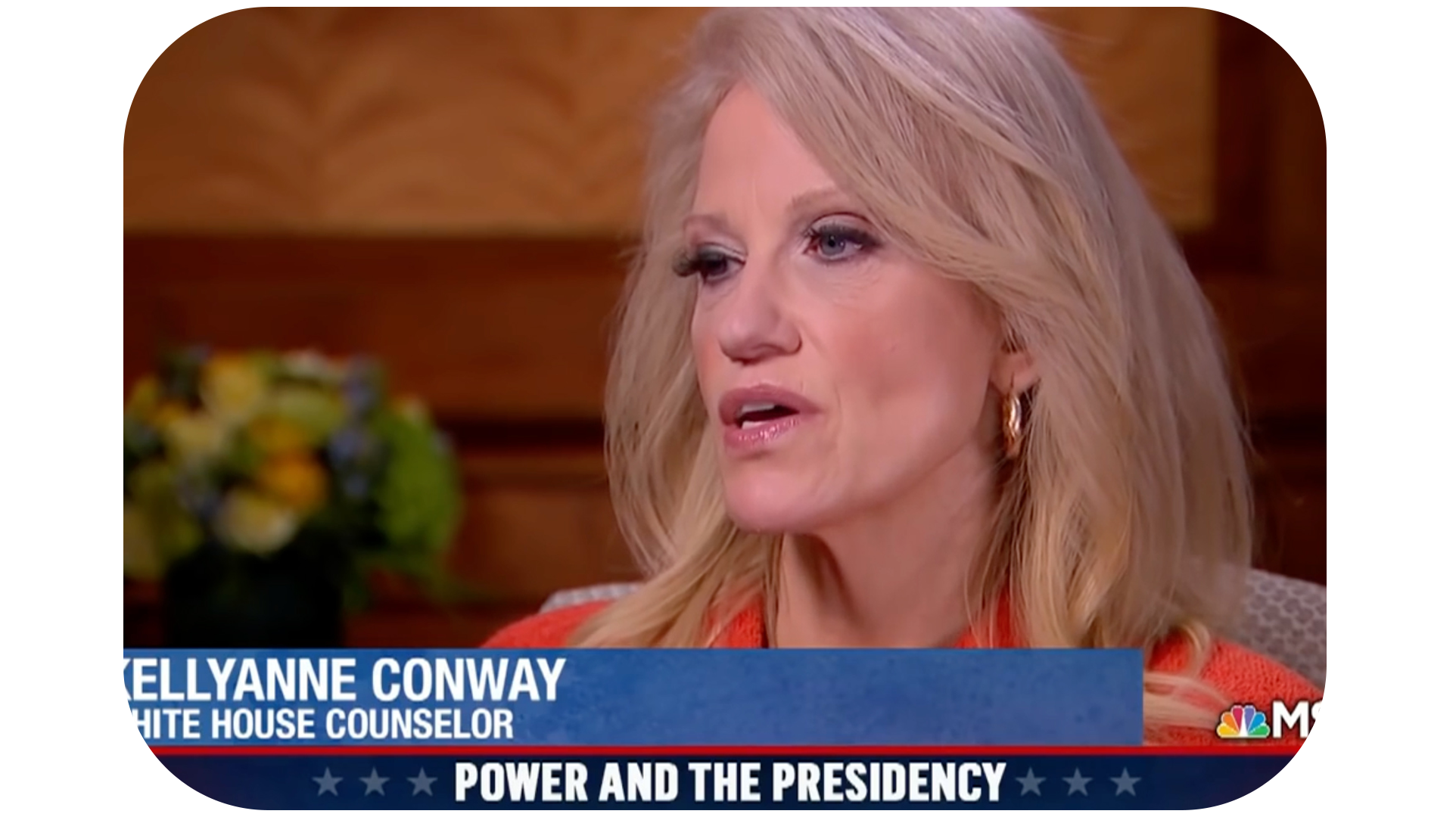


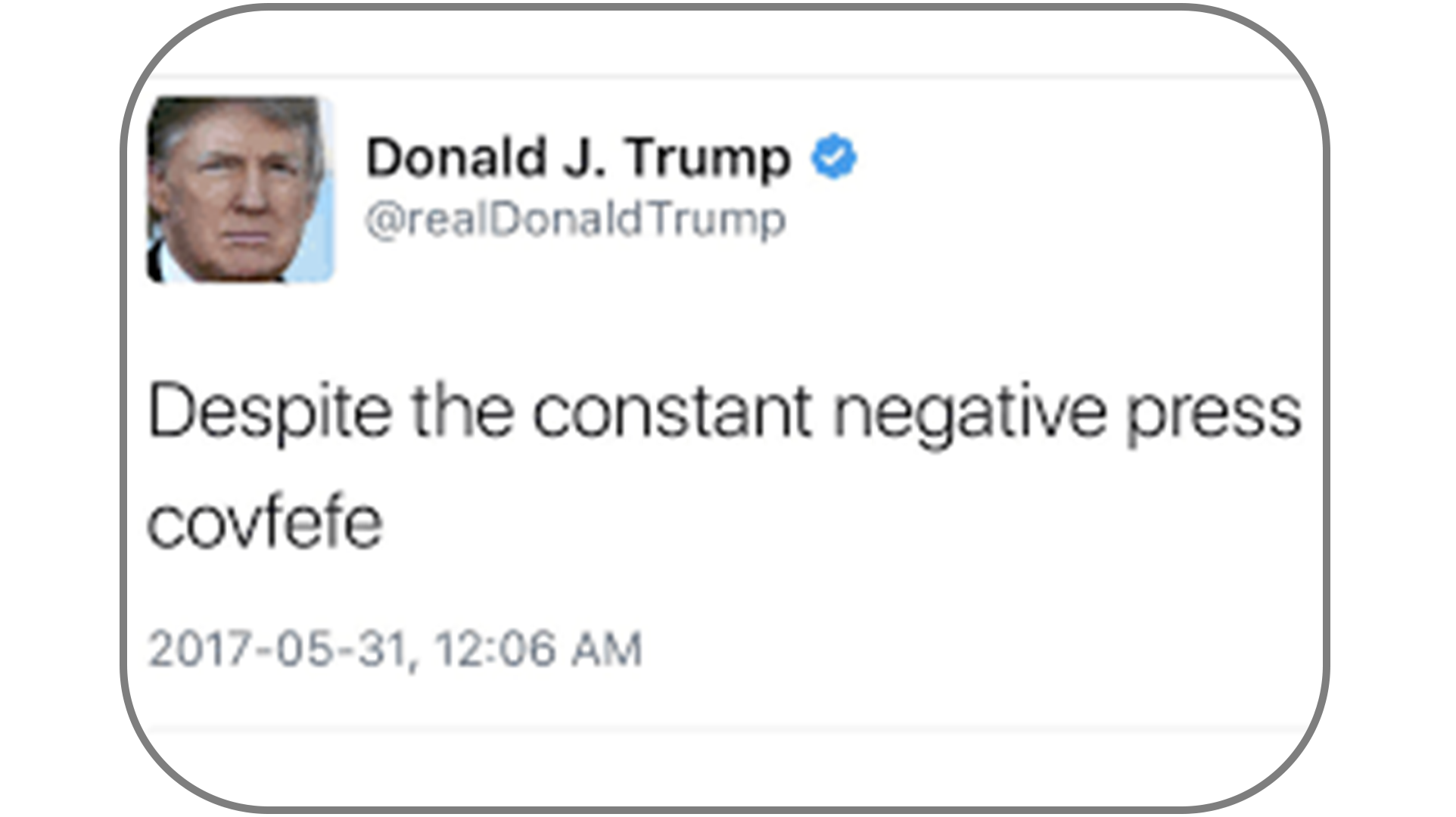 covfefe
covfefe